S O M N I V M by Ganbrood
“We ought not to ask why the human mind troubles to fathom the secrets of the universe. The diversity of the phenomena of nature is so great, and the treasures hidden in the skies so rich, precisely in order that the human mind shall never be lacking in fresh nourishment.”
Kate Vass Galerie is thrilled to announce the exclusive program S O M N I V M by Bas Uterwijk, aka Ganbrood. The program is a part of the group show ‘'Dear Machine, paint for me” that takes place on 27th October. The artist will be present, giving an introductory talk with curators of the upcoming group exhibition by Georg Bak & Kate Vass. For the first time, the artist will be exhibiting his works in physical and digital form, minted on post-fork ETH and accompanied by Fine Art prints on thermo-aluminium, signed by the artist.
When you see a shape in the dark, your brain tries to interpret it by mirroring the form, colour and material characteristics to your memory's frame of reference. Anything you ever saw and remembered could play a role in the pattern recognition process in your mind.
The synthetic image generation of Generative Adversarial Networks and Diffusion models works eerily similar to this human process: Input or random noise is compared to a vast trained library model of thousands of millions of fed images, and every possible image between these inputs, so-called 'Latent Space'.
Instead of using this method as a way to generate variations on existing pictures, Ganbrood uses these neural networks as a silicon muse to evoke and stimulate his expressive mind while at the same time interrogating the very essence of creativity: Could it be possible that a quality that was always considered as eminently human, is easily imitated or even reproduced by an algorithm? And when that is the case, are our fantasies and imagination may be controlled by mathematic expressions more than we would consider?
Like every artist is expanding on the work of their most revered predecessors, In 'S O M N I V M', Ganbrood uses visual themes that have always inspired him since youth: mythology and fairytales, theatre and film, painting and photography, videogames and comics. Drawing parallels in timeless variations of visual narrative by seeking their mathematical interfaces in latent space. Where a classicly trained artist like a painter or a sculptor would dig these shapes and symbols from memory, Artificial Intelligence is providing the present-day artist with the tools to draw references from synthetic storage, where the craftsmanship of brush and chisel are shifted to recognition and curation of artificial outputs.
Artificiality has always been a decisive element in Ganbrood's past work, whether using special effects and 3D animation for film or photographing actual events in a serene way that almost looked staged.
Always fascinated by illusions and trickery, Ganbroods oeuvre is a voyage of exploration into pseudo-figurative and mind-altering effects like pareidolia, apophenia and synchronicity.
This exploration takes an almost literal shape in "In this hard rock, whiles you do keep from me" and "This Island's Mine", where sci-fi elements of glorious space adventures meet Renaissancistic scenes. Set in a cinematic universe, the viewer can almost define the actors and decor of these who, after close inspection, turn out to be little more than abstract shapes.
Tragoidia and Les Filles du Roy are like stages. The elements of contradictory mediums like fresco paintings and photography or 3D are battling for the spectator's conclusion of how to interpret what is perceived.
Some artworks from S O M N I V M selection are exhibited at the group show ‘'Dear Machine, paint for me” from 27th October till 14th December 2022 at The Circle, Zurich.
FROM 'ALTERNATIVES TO 'LYRICAL CONVERGENCE' BY ESPEN KLUGE
Lyrical Convergence comprises 100 new generative artworks, seeded with the same dataset from Kluge’s former Alternatives series, exhibited in both physical and digital form for the first time during the group show at Kate Vass Galerie, opening on 27th October 2022 in Zurich.
Espen Kluge is a true polymath: a composer, a visual artist, and a creative coder. He is fascinated by spontaneity and the exploration of semi-randomness in moments of improvisation.
This unique approach is reflected in his two series, which are closely related: Alternatives (2019) and Lyrical Convergence (2022). Both use the same set of data but two different algorithms. The artworks showcase the diversity of human perception, objectivity, and subjectivity, where we see the transformation from former Alternatives ‘figurative’ to abstractionism of ‘Lyrical Convergence’.
ALTERNATIVES, 2019
The alternatives series were exhibited for the first time in 2019 at the physical premises of Kate Vass Galerie. It marked a historical moment, where NFTs were shown as an artwork along with fine art prints as a solo show curated by Jason Bailey, aka Artnome. 100 unique portraits generated by JavaScript based on data collected from photographs taken in real by Espen since 2013 were on display as digital and physical art. Kluge’s portraits are monumental and structural, reminding us of the sculpture of Russian constructivists like Naum Gabo and Vladimir Tatlin. But in contrast to the sombre colours of the constructivist movement, Kluge’s works play with vibrant colours, where he questions the object and its characteristics, where vector-based lines serve a particular dynamic to describe the persona. His code takes photographs as input, loops through all the pixels in a raster image, chooses some at semi-random, and then engages those pixels by putting lines between them. Espen believes that the quality of each of his portraits comes from the fact that he writes by hand a new version of his algorithm for every portrait in pure Javascript.
Click below to browse the complete catalogue and the official website: https://alternatives.art
LYRICAL CONVERGENCE, 2022
Ravissement, oil on canvai, 1961 by Georges Mathieu
As a continuation of his experiments with the same data over the last 3 years, Espen developed a new algorithm that created a new set of works, the Lyrical Convergence.
With new growth algorithm Espen attempting to visualize the inner kismet of the Alternatives portraits. In contrast to the original series's geometric structure, the new sequence's result presents an organic-looking abstract form expressing intangible sensations.
The monochromic background, the centralized shape, the united lines, and the neat, calm colour palette are reminiscent of the art of Georges Matthieu, one of the fathers of lyrical abstraction.
The converging lines, which recall the cardiogram emphasis on colours, seem to interrogate the unconscious. Like a living creature on X axis, the linear progression dictates the dark landscape with its unique pace.
The artist adapts the immediate and direct approach to the new algorithm that brings into question the subject's position with respect to the object. Espen exalts it with the projection of his code with the coherent intensity to which the algorithmic execution of fragmentary castellations of lines, fields and colour imparted a maximum objectification. He makes it a place almost independent of the artist's existence, the code, and the manifestation of art itself. His series Lyrical Convergence is insemination in which subjective and objective, rather than being considered antonymous, hold a dialogue and form integration.
Like the European abstractionists, Espen’s works express something personal, vibrant, and entirely imaginative, in other words - lyrical.
Lyrical Convergence comprises 100 generative works, seeded with the same dataset from his former Alternatives series, exhibited in both physical and digital form.
Purchasing and Displaying NFT Art at Home: Expert’s Advice
September 7, 2022
Nothing beats an explosion of blockchain news to leave you wondering, “Um… what’s going on here?” That’s how I felt when I read about Grimes being paid millions of dollars for NFTs or Nyan Cat being sold as one.
The situation has only gotten more complicated in the year since NFTs became popular. Images of apes have sold for tens of millions of dollars, headlines about million-dollar hacks of NFT projects abound, and corporate cash grabs have only gotten worse.
All of this news may have left you wondering: what exactly is an NFT?
After consulting with a group of NFT experts, I believe I’ve figured it out.
Okay, let’s start with the basics.
What is an NFT?
An NFT is a Non-Fungible Token (a unique digital token), which many see as a certificate of authenticity, or a deed or proof confirming you own the right to display the above art on your wall or in your wallet (digital wallet). It might give you the right of ownership of the copy you bought (for your private use) but not necessarily over the ownership of the original artwork. Production rights and copyright are automatically retained by the artist unless otherwise specified in the contract. Regardless, non-fungible means ‘irreplaceable’ since each token is unique. And ‘Unique’ creates scarcity which, in turn, increases the market value for NFTs.
An NFT is technically an ERC-721 token on the Ethereum Blockchain. Another meaning of ERC is a ‘collectible’. The artwork is minted into the ERC-721 token. This token contains:
The historical information of any transactions plus artist information (including the artist’s public key) plus the number of likes (see the tiny ‘heart’ symbol above the image in the NFT).
A unique identifiable number = the token ID (click ‘chain info’)A picture of the art
A smart contract (the NFT is effectively a smart contract – you don’t need humans to sign signatures). Standard copyright law applies, and more specific conditions can be added to the description section.
A list of unlockables (additional optional extras e.g., a table mat or even a jigsaw with the art printed on it accessible via a link in the description.
NFTs can include art (paintings, graphics, videos, GIFs, songs, poems, tweets, posts even video games, virtual real estate, books), even birth certificates, and an awful lot more. Fungible means ‘replaceable by another identical item’. Non-fungible means are irreplaceable or unique. Another way of thinking about NFTs is as a process of documenting authorship and ownership.
Paul Smith from PR Smith
How can I minimize the risks of investing in NFTs?
Non-fungible tokens are taking the digital work with the many benefits they offer to both creators and investors. However, as NFTs are a relatively new asset class, they come with a unique set of risks. Before you invest in the market, you need to understand how to minimize the risks involved. Whether you are collecting NFTs for investment reasons or just for the love of art, there are two important steps you must always take into consideration: the security of the transaction and the storage of the NFTs.
One of the main NFT risks threatening investors is scams. Malicious actors may impersonate popular platforms, wallets, or well-known artists and sell fake artworks to unsuspecting customers. For this reason, it is always important to do your research on which wallet you are transferring your money to and where you are getting the money from. Checking the provenance of the work can also help you avoid falling victim to scams. Platforms usually provide guidance on how to make sure that the artwork was minted by a real artist.
Once you have purchased an NFT, you can move it to cold or warm storage. The warm storage, such as Coinbase or MetaMask, is connected to the internet, making it easier for hacking to take place. Even if the platforms use the most advanced security measures, with the failure to securely store passwords, hackers can easily steal users’ non-fungible tokens. If you want to secure sensitive data, we recommend using cold storage or hardware, such as Ledger or Trezor. These options are safer as all key information is on the device, protected by password or touch authentication, and more difficult for threat actors to access. The only risk of storing your NFTs in hardware storage is the loss or damage to the device. For this reason, many users own two cold storages, which is probably the best solution to protect your assets.
Agnes Flora Ferenczi from Kate Vass Gallery
Hungarians among the leaders of European art
During the 19th and 20th centuries, Hungarian artists were among the leaders of European art. From realistic genre scenes to avant-garde constructivism, to photography, many masterpieces left a mark on art history, both in Hungary and abroad.
Art before the 19th century
As an important Hungarian art historian, Lajos Fülöp argued in his essay, „The Task of Hungarian Art History” in 1951, Hungarian art had not existed before the 19th century: there was no art education or no influential great masters. Even the country was fragmented: at war with the Turks or with the Austrian army. Many of the greatest works from these periods had been produced by artists who came to Hungary from abroad or were born in Hungary but trained and worked in other countries. A good example of the latter is a still-life painter, Jakab Bogdány, who studied in the Netherlands and settled in England, or Ádám Mányoki, who had worked in Germany for princely patrons.
However, the 19th century was relatively peaceful. Hungary was part of the Austrian Empire and finally, the country was able to establish cultural institutions, such as National Museum (1802) and Hungarian Royal Drawing School (1871), and organize contemporary exhibitions (from 1840) for the public. With this institutional framework, the demand for Hungarian art and Hungarian painters started.
The list we compiled includes some of the most famous Hungarian artists who formed the art of the 19th and 20th centuries.
Mihály Munkácsy
Mihály Munkácsy was probably one of the most internationally well-known celebrities of the 19th century. He was born in Munkács, Hungary, he spent most of his life in Paris. He sold his realist works to wealthy European and American collectors, and his paintings are in collections such as the Metropolitan Museum of Art or the Milwaukee Art Museum.
His first great successes were the „The Last Day of a Condemned Man”, for which he won a gold medal at the Paris Salon, and the „Woman Carrying Brushwood”. Both depicted Hungarian peasants and were painted in the manner of the Düsserdorf school. In the late 1870s, he also worked in Barbizon and painted richly colored landscapes such as “Walking in the Wood”. His realist portraits, including “Franz Liszt” or “Cardinal Haynald” were also painted during this period. In the late 1870s, he met an Austrian-born art dealer, Charles Sedelmeyer, who offered him a ten-year contract. This deal brought Munkácsy worldwide fame, wealth, and security. Sedelmeyer convinced him to create a large-scale Biblical series about the Passion of Christ. When Munkácsy completed the trilogy, the art dealer took the works on tour across Europe and United States. The paintings were exhibited in a dark room, without a frame, illuminated by candles. It was what everyone in Paris was talking about. After the financial success of the Christ trilogy, he started to create elegant salon genre paintings. Finally, his fame has washed away by the modernism of the early 20th century.
József Ripp-Rónai
József Rippl-Rónai was born in 1861 in Kaposvár, Hungary. He began his art studies at the age of 23 at the Münich Academy. In 1887, he was able to travel to Paris with a scholarship to learn from the most famous Hungarian realist master, Mihály Munkácsy. From the early 1890s, he sought his way among the era’s different styles, mainly Symbolism and Art Nouveau. He met the artists of Les Nabis and became a member of the group. Under their influence, he turned his interests to graphics, lithography, and applied art. One of his masterpieces from the Paris period is “Les Vierges”, which presents symbolic stages of women’s fate. From the middle of the 1890s, he started designing furniture and glasses, and tapestries, which led to commissions such as the design of the dining room of the “Andrássy Palace”. Later, he returned to Hungary and created a very special decorative style, called “corn style” ("Dressing women"), in which he applied a fluffy effect paint to the canvas.
Lajos Kassák
Lajos Kassák was the main figure of the Hungarian avant-garde movement. He was not only an avant-garde painter, but also a poet, novelist, essayist, and editor who brought together aesthetics and social criticism. Kassák first established himself as a writer when he published his first poem in 1908. In 1915, he published his provocative journal, “A Tett”, about activism and anarchism. After one year the journal was shut down by the Hungarian Ministry of the Interior. Kassák fled to Vienna in 1920 where he relaunched his magazine “MA”, on which he worked with Sándor Bortnyik, Béla Uitz and László Moholy-Nagy. His works, which were displayed in “MA”, show the great influence of the European avant-garde movements, combining Futurist, Constructivist, Expressionist, and Dadaist elements in the pieces. His introduction to the visual arts started with the so-called “image poems” inspired by Dada, where he displayed letters and lines aesthetically. From 1921, his art shifted towards a more reductive form of geometric abstraction. He called these works “picture architectures”, which were greatly influenced by the art of Malevich and Tatlin. In 1926, he returned to Hungary and continued editing and publishing leftist journals such as “Munka” (Work) and “Dokumentum” (Document). Kassák's innovative responses to social issues position him as a pioneer of modernity in art.
László Moholy-Nagy
László Moholy-Nagy was a Hungarian painter, photographer, and professor at the Bauhaus school. He was born László Weisz in 1895. Honoring his uncle, who raised him, he adopted the surname Nagy, and Moholy from the town he grew up. In 1919, he fled to Vienna and joined Lajos Kassák’s avant-garde group, publishing many of his works in the journal “MA”. His paintings from this period were constructed in geometric forms that are often overlapping, creating a careful study of transparency. Later, he relocated to Berlin, Germany, where he met photographer and writer Lucia Schulz, his first wife. Moholy-Nagy was fascinated by technology; he transformed industrial and urban elements into his paintings. In 1923, Walter Gropius invited him to teach at Bauhaus, which gathered many avant-garde artists, like Paul Klee, Wassily Kandinsky, and Oscar Schlemmer. During this period, he was the co-publisher of the Bauhausbücher and designed typographies. Under the guidance of his wife, he also started experimenting with film and photography. Due to the political tensions, in 1937, he moved to Chicago and became the director of the New Bauhaus School. In the United States, Moholy-Nagy continued to work with art and technology until he died in 1946. His legacy influenced many different disciplines, including photography, architecture, design, and painting. His artworks can be found in major museums, like Schirn Kunsthalle Frankfurt, Solomon R. Guggenheim Museum, Los Angeles County Museum of Art, Museum of Modern Art, and Art Institute of Chicago.
Victor Vasarely
Victor Vasarely was one of the leaders of the Op Art movement, a style based on optical illusion. He was born in Pécs, Hungary, in 1906. He began his art studies at Bortnyik Sándor’s private school, called Műhely Academy, which was mostly based on the theory of the Bauhaus school. In 1930, he settled in Paris, where he began his career in several advertising agencies. In Paris, he created abstract works, such as Zebra (1937), regarded today as the earliest examples of Op Art. In the 1940s, Vasarely experimented with styles such as Surrealism and Expressionism before arriving at his signature geometric, abstract, colorful style with a compelling illusion of depth. Later in his career, Vasarely experimented with kinetic art, creating many moveable sculptures. From 1955, he worked with a defined palette of colors and forms and started serial arts, an endless permutation of forms, and colors. Before his death in 1997, he founded several museums dedicated to his works.
André Kertész
André Kertész was one of the best-known photographers of the 20th century, renowned for his lyrical, elegant, and rigorous style. He was born in Budapest in 1894. In 1925, he published his first photograph on the cover of a local newspaper, Érdekes Újság. In the same year, he emigrated to Paris. He worked as a freelancer for numerous publications and met Piet Mondrian, Sergei Eisenstein, and many of the Dadaists. In 1936, after the rise of Nazism, he fled to the United States, to New York, where he began collaborating with magazines like Vogue, Harper’s Bazaar, and Coronet, and organized solo shows at the Art Institute of Chicago and Museum of Modern Art New York. During this time, Kertész developed his fascination for capturing images of people in outside spaces such as parks, windows, and balconies. He loved using geometric lines and patterns, turning a street scene or object into something metaphorical and permanent. Kertész made a huge impact on other well-known photographers, including the Hungarian Robert Capa and Brassaï, who considered him a mentor.
Vera Molnár
Vera Molnár is a Hungarian media artist living and working in Paris, who is considered one of the pioneers of computer and generative art. Early in her career, she was trained as a traditional artist at Budapest College of Fine Arts, then in 1947, she moved to Paris. In 1968, she began working with computers. She taught herself the early programming language Fortran, which allowed her to create algorithmic paintings with endless variations of simple geometric shapes. She gives instructions to the computer, which are outputted to a plotter drawing. She experiments with the transition between order and chaos, deliberately introducing a 1% disorder, a systematically defined factor of a chance to influence his works. She became a cofounder of several artistic research groups, such as G.R.A.V., which investigated mechanical and kinetic art, and Art et Informatique, which focused on art and computing. Her works have been featured in major solo and group exhibitions and in the collection of the Museum of Modern Art, Victoria and Alberts Museum, and the Centre Pompidou.
Charles Csuri
Besides Vera Molnár, Hungary can also boast another pioneer of computer art, Charles Csuri, who created new artistic tools for 3D computer graphics, computer animation, gaming, and 3D painting. He was born in 1922 in Grant Town, West Virginia, to parents from Hungary. Charles, also known as “Chuck”, was the team captain of the OSU national championship football team in 1942. Then, from 1943 to 1946, he fought for the US in the Battle of the Bulge, receiving the bronze star for heroism. After the war, he returned to Ohio State and completed his studies in art. He was the youngest professor with academic degrees in Fine Art, Engineering, and Computer Science. At the university, he established a series of graphics research centers.
He started experimenting with computer-based multimedia in the 1960s, in the form of plotters, canvas, screen print, sculptures, holograms, and animation. He was quickly recognized by museums such as MoMA or the Association for Computer Machinery Special Interest Group Graphics. After spearheading developments in the field of computer graphics, he created the first computer animation company, Cranston Csuri Productions, in 1984. Charles created digital art till the age of 99. At the end of his life, he was also experimenting with NFTs. He will be remembered as a renaissance man: an athlete, professor, artist, and innovator, who combined art and technology as one of the first pioneers of the genre.
Leslie Mezei
Leslie Mezei is one of the most influential participants in the North American computer art scene. He was born in Budapest, Hungary in 1931. In the 1940s, he emigrated to Canada as a war orphan and holocaust survivor. In the 1950s, he started studying physics and mathematics at McGill University, Montreal, then he moved to Toronto, where he obtained a master’s degree at the University of Toronto. He stayed at the university, first as an assistant and then as a professor from 1964 to 1978.
His experimentation with computer art started in the 1960s. He developed two early graphic programming systems, SPARTA and ARTA, featuring graphic primitives and transformations like lines, polygons, rotation, and random number generators. The ARTA enabled the use of a light pen as an input device as well as keyframe animation. From 1968 he collaborated with Frieder Nake, Bill Buston, and Ron Baecker, whom he had invited to Toronto for a project called “Dynamic Graphics”. In the late 1970s, he turned away from computer art and began working as a personal financial planner and writing about spirituality.
"The Inner World" series by Dominikus will launch on Art Blocks on the 2nd of September
What is bigger, the inner space or the outer? - Dominikus asks this question in his latest series, ‘The Inner World”, which consists of 400 works and will launch on Art Blocks on the 2nd of September.
The Inner World #99, (sample outputs) by Dominikus / Copyright © Dominikus
This project was inspired by the multitudes we keep within us. The harsh shadows and the combination of pure 2d rendering with a 3d effect mimic feelings of separation from the rest of the world. Their undetermined scale reflects the seemingly unlimited depths of consciousness.
The Inner World starts its rendering from one or more circular cores representing the centers of our personalities. Each of these cores spawns various thoughts and emotions, flowing as tendrils through the scene, making connections among themselves or reaching for the outside. Their movement ranges from straight and orderly to (seemingly) chaotic, sometimes twisting the clean underlying personality center into a completely different shape. Two rendering styles (illustrative and shaded) with palettes ranging from cool, gloomy, and serious to cheerful or dramatic reflect the variety of predispositions.
While waiting for the rendering to complete, look at the focus animation highlighting the circular cores of your piece. You're invited to spend this time pondering how everything you know, everything you have or will ever experience, and even the most majestic sights from stars to microbes fit into the space between your ears.
The whole series will be available on Art Blocks.
Dominikus's unique works can be found on his Foundation page and the PHYGITAL website.
His works will be on display on OnCyber between the 2nd - 9th of September.
The co-founder of Ars Electronica, Herbert W. Franke passed away at the age of 95
"Art is always about mathematics. Every image can be described mathematically. There is nothing more than a formula behind it.”
One of the pioneers of generative art has died: Herbert W. Franke, artist, writer, physicist, and philosopher, whose work influenced generations of new media artists, was 95 years old. Herbert's death on the 16th of July was announced by his wife, Susanne.
Herbert Werner Franke Image © the artist
Herbert Werner Franke was born in Austria on May 14, 1927. He studied Physics and Philosophy in Vienna. In 1951 he received his Doctorate in Theoretical Physics by writing his dissertation about electron optics. Today Franke is known as the most important post-war German-language writer in the genre of science fiction. Franke is also recognized worldwide as a pioneer of algorithmic art. His intellectual work is based equally on the rationality of the researcher and the creativity of the artist. He is particularly interested in creating aesthetically interesting structures with the help of computer programs. In addition to creating works of art, Franke has also been intensively involved in questions of rational aesthetics. In his "Rational Theory of Art," published as early as the mid-1960s, he described the perception of art as a construct that can be grasped with the help of information theory.
Kate Vass Galerie is honored to have worked with him and exhibited his works. He was part of our AUTOMAT UND MENSCH exhibition in 2019, where we put important work by generative artists spanning the last 70 years into context by showing it in a single location. By displaying important works like the 1956/’57 oscillograms by Herbert W. Franke, we showed the full history and spectrum of generative art.
The MATH GOES ART was a solo exhibition in 2021 at Kate Vass Galerie, that was dedicated to Herbert's latest period, the so-called Math Art. Herbert W. Franke has been interested in mathematical aesthetics for the last decades and had experimented with algorithms and computer programs to visualize math in art.
"It opened my eyes to things I had never seen before, such as beautiful crystalline landscapes. It soon became clear that if the electric fields were deliberately calculated differently, quite adventurous figures would emerge. That gave me the idea of using other tools of technical laboratories, such as oscillographs and later computers, to create images for artistic purposes." - he commented.
Drakula Series, 1970 - 1971
The Drakula series, from the seventies, was displayed at the MATH GOES ART show. The series was an ideal instrument as a study object of experimental aesthetics since they could be quantified well in terms of information theory. The Heighway dragon curve was first discovered by NASA physicists John Heighway and Bruce Banks in 1966 and named by his colleague William Harter. It can be constructed from a base line segment by repeatedly replacing each segment by two segments with a right angle and with a rotation of 45° alternatively to the right and to the left. Franke's 'dragon curves' are formed by sequences of left and right turns according to certain rules. The program allows to string together and superimpose dragon curves of different orders - or even sections of such curves.
The Lissajous Series
We are also proud that Herbert minted his first NFTs with the Gallery. The Lissajous series consists of 11 works in two color combinations: Lissajous blue/orange and Lissajous pink/turquoise. Only 4 were minted on opensea.io and are now only available from the secondary market. The Lissajous figures can be defined as any of an infinite variety of curves formed by combining two mutually perpendicular simple harmonic motions, commonly exhibited by the oscilloscope, and used in studying frequency, amplitude, and phase relations of harmonic variables. They are named after the French physicist Jules Antoine Lissajous (1822-1880). Lissajous curves are sometimes also known as Bowditch curves after Nathaniel Bowditch, who studied them in 1815 but were studied in more detail by Jules-Antoine in 1857.
Two artworks of Herbert W. Franke are currently available at Phillips Auction. More information can be found here.
The artists, Robbie Barrat, Mario Klingemann, Herbert W. Franke and co-curators Jason Bailey and Georg Bak with Kate Vass, at Kate Vass Galerie 2019 Automat und Mensch
Ex-Machina: A History of Generative Art by Phillips
Ex-Machina: A History of Generative Art © Phillips
Phillips is pleased to present Ex-Machina: A History of Generative Art, an exhibition and online auction. Curated by Georg Bak, Ex-Machina illustrates the history of Generative art, starting in the 1950s with the pioneers of computer art through to present day generative NFT artists. Featuring unseen works by pioneers Vera Molnar, Herbert W. Franke and Gottfried Jäger, Ex-Machina also brings to market for the first time works by generative NFT artists Snowfro and Dmitri Cherniak. The full selection of works will be on view at 30 Berkeley Square, London from 11 July - 5 August, with the online auction taking place 13 - 20 July on phillips.com.
An Introduction to Generative Art by Georg Bak
© SNOWCASH
The new age of information technology began with the invention of the Turing machine and the first mainframe computers by Konrad Zuse during and after the Second World War. As early as the late 1940s, Norbert Wiener and Claude Shannon formulated the first theoretical approaches to cybernetics, which form important foundations for information aesthetics.
The binary system, electronic communication, algorithms and early programming languages also inspired artists. Herbert W. Franke is among the pioneers of computer art, who created works of art – so‐called oscillograms – with analogue computing systems and cathode ray oscillographs as early as the mid‐1950s. On the control panel, he turned, calculated and manipulated, and sine curves and sawtooth curves, which were photographed with the camera, were superimposed on the screen.
Even then there was a group of artists who were open to the new technology. Large corporations, namely Olivetti, Siemens and Bell Laboratories, provided them with electronic engineering equipment and the know‐how of their specialists.
Looking back, 1968 is considered the high point of the computer art movement. At the Institute of Contemporary Art (ICA), London, Jasia Reichardt curated the groundbreaking group exhibition Cybernetic Serendipity, featuring computer‐animated films, plotter graphics, generative music, robots and painting machines.
Among the participating artists were Frieder Nake, Georg Nees, Desmond Paul Henry and Vera Molnar. As a result, the Computer Art Society and the computer art magazine PAGE, edited by Gustav Metzger, were founded in London. Today, the Victoria & Albert Museum in London preserves a large part of the heritage of this period of promoterism.
© SNOWCASH
One day after London, Abraham A. Moles opened the Computers and Visual Research symposium as a parallel event as part of the Nove Tendencije (New Tendencies) exhibition series in Zagreb, as well as a small accompanying exhibition with computer graphic by Charles Csuri, Vladimir Bonacic and other artists. As a result, a major new art magazine, bit international (1968‐1972), was launched in Zagreb.
At the same time, the German photographer Gottfried Jäger introduced the concept of generative photography with the exhibition of the same name in the Städtische Kunsthaus in Bielefeld, where his pinhole structures can be seen together with works by Kilian Breier (photograms), Pierre Cordier (chemigrams) and Hein Gravenhorst (photomechanical transformations). Gottfried Jäger defined the production principle common to the artists and inherent in generative photography as follows: “Creation of aesthetic structures based on defined programs, realized through photochemical, photooptical or phototechnical operations, with the aim of achieving an optimal and functional relationship of all the elements involved in the construction of the aesthetic structure.” Characteristic of generative photography is the experimental and serial process, the mathematical structure (program) and often the devices designed by the artists themselves.
Twenty years later, when the personal computer conquered office desks in the 1980s, the media theorist Vilém Flusser stated with foresight: “Changing the world is up to machines: they do it much better than humans. It is up to humans (for the time being) to program machines to change the world. So it is not people's business to work, but to give work a meaning (to prescribe it). Rules are codified commands.”
© SNOWCASH
At the end of the 1970s it was again Herbert W. Franke who took the initiative to organize a large exhibition “Ars Ex Machina” at Künstlerhaus Wien with the aim of creating an annual show highlighting the current artistic expressions in relation to the most cutting-edge technology. Unfortunately, the project could not be realized at the given time due to a lack of financial support. As a result of these ambitious efforts, “Ars Electronica” was founded in 1979, which has taken place annually in Linz (Austria) ever since and is still one of the most important exhibitions of media art today.
With the explosive rise of blockchain technology and the conquest of the art market by NFTs and digital art, PHILLIPS is undertaking, for the first time in auction history the endevour to highlight the most important and overlooked art movement of generative art with the major artists of now and then.
Dates:
London Preview 11 July – 5 August (30 Berkeley Square)
Online Auction 13-20 July 2022
More information about the auction can be found on the official website.
‘My first NFT, and why it was not a life-changing experience’ by Cornelia Sollfrank
NfTNeTArT, exhibition view at panke.gallery, anonymous_warhol-flowers, left Sabotage by Kim Asendorf, Copyright © Makery
“From Commons to NFTs” is an (expanded) writing series initiated by Shu Lea Cheang, Felix Stalder & Ewen Chardronnet. Cautioned by the speculative bubble (burst) of NFTs, the series brings back the notion of commons from around the turn of the millennium to reflect upon and intervene in the transformation of the collective imagination and its divergent futures. Every last day of the month Makery publishes a new contribution of these “chain essays”. Fifth text by Cornelia Sollfrank.
In a nicer, happier world, NFTs would be fun little things you could make and collect and trade, and it’d be great. It’s a pity this is crypto.
In December 2021, I was approached by Sakrowski, the curator of panke.gallery, an off-space in Berlin focusing on Internet Art. He was planning a NFT show for February 2022. Before explaining any further details, the curator asked me if I would be up for offering NFTs of my work. A good question! I was skeptical of the hype while at the same time interested in forming an opinion based on practical, first-hand experience. Artists have tried to rethink the blockchain for a while now. How to approach a technology that has been poised for a few years now to overtake the WWW “as the next big network technology for speculation and disruption,” and use it for something meaningful, i.e. for something that is not purely driven by financial profit-logic? I agreed to participate in the show as a sort of experiment. As an artist I have the opportunity to get to know something by exploring its (im-)possibilities in practice, to find entry points and loose ends and work my way forward.
Edition //OG flowers //, #1-3, #6-8, anonymous-warhol_flowers@May12, still available for purchase as NFT Copyright © Makery
NFTs are one application of blockchain technology, and I am particularly interested in exploring the hype around NFTs in the art context. A quick reminder: Not all NFTs are art. The abbreviation simply stands for “non-fungible tokens,” i.e. certificates of ownership, mainly for “unique” digital assets, stored on the blockchain. NFTs have existed for a few years now, but as a cultural phenomenon they have received broad media attention following the sales of NFTs for art works for which many millions were paid. Suddenly, all eyes turned to the matter, and I asked myself, what was the reason was for this sudden interest in digital art? Why were millions paid now for digital files? Obviously, the digital certificates of ownership have created not just a hype, but also a new market for digital art, but what are the dynamics behind? Who will be able to participate in the world of Art NFTs, and who will do so successfully? Are its opportunities more democratic than the ones of the traditional art world? And not the least, what is the role of the technology behind? Who invents it? Who controls and in whose interest? Is there just some weird genius behind who has managed to create a fetish that is about nothing but keeping our minds and machines busy?
My way to deal with some of the involved abstractions is the one of play and open exploration, thus hoping to find insight through lived contradictions, through the experience of absurdities and confusion by diving into the field instead of observing it from outside. I develop my thoughts along an exhibition I have participated in as an experiment with NFTs.
Copyright © Makery (published 31 May 2022 by Cornelia Sollfrank)
BIG IN JAPAN! AN EXCLUSIVE INTERVIEW WITH SPUTNIKO!
We are excited to share with you an exclusive interview with one of the most talented digital artists Hiro Ozaki aka Sputniko! The interview will be published on 10th June 2022 featuring majorities of her iconic works, that will become available as NFTs for sale.
Copyright © 2022 Sputniko! and Kate Vass Galerie GmbH | All rights reserved
Kate Vass interviews Hiro Ozaki (aka Sputniko!) about her influences, from MIT Labs to art, film and music, and the cultural experiences that have shaped her life and creative practice.
Her work has been exhibited at the MoMA, Pompidou Metz, V&A, and the Cooper Hewitt, and she was awarded Vogue Japan Woman of the Year in 2013. Sputniko! taught at the MIT Media Lab as an Assistant Professor and was the founder of Design Fiction Group from 2013 to 2017. She is currently an Associate Professor at the Tokyo University of Arts. Sputniko! has also been selected as a TED Fellow and gave her TED Fellow talk in TED 2019. She was also chosen as one of the Young Global Leaders by the World Economic Forum and moderated sessions in Davos 2020. She has had her works included in the permanent collections of museums such as the Victoria and Albert Museum (UK) and the 21st Century Museum of Contemporary Art, Kanazawa (Japan).
This conversation addresses gender inequality issues and explores Hiro’s work retrospectively, including the early artworks like MENSTRUATION MACHINE, 2010. The first installation with a video explores the relationship between identity, biology, and choice while inquiring into the meaning of gender-specific rituals.
THE MOONWALK MACHINE, 2013, where Hiro unravels a story about the protagonist Selena, a young science geek, to change the perspective of how Japanese society overlooks young girls’ potential and the social role of women.
In addition, we look at the RED SILK OF FATE, 2016, which was inspired by East Asian mythology in which gods tie an invisible red string between two people that are destined to be together romantically.
And finally, Hiro shares her thoughts on NFTs, Web3 culture, and more projects. We hope you will enjoy reading the interview and discover her excellent work.
All NFT works of Sputniko! can be found on Foundation!
Is art human? Exploring artist collaboration with AI and Algorithms at the Seattle NFT Museum Opening at the Seattle NFT Museum on June 4, 2022
Today, the Seattle NFT Museum announced the fourth exhibition this year, titled “Artist and the Machine,” which will open on June 4th. The paintbrush of digital art has unlimited potential, from 3d renderings to live motion, but perhaps nothing could have prepared us for the impact of algorithms and AI. In this exhibit you will see the wild interactivity between artists and their machines, generating powerful, emotional displays.
“We want to showcase the incredibly rich world of generative art, exploring the endless creative possibilities of the genre and beginning a conversation about the deeply human and aesthetic impact it demonstrates as a medium. Generative art is rapidly gaining recognition as fine art. In this exhibition, we are showing a multitude of outcomes, results, and rich nuances found in the practices of such representative artists,” Joana Kawahara Lino, Curator in Residence at the Seattle NFT Museum
Ticket now on sale: Exhibition Opening Event, June 4th 7:00pm - 10:00pm PT
Seattle NFT Museum is hosting an opening event to launch the new exhibition. Attendees have the opportunity to hear directly from several of the artists on display, learning more about their work and inspiration and meeting them to ask questions. Tickets are on sale now for the exhibition opening on Saturday, April 16th, 7:00pm-10:00pm. Purchase tickets here - https://www.seattlenftmuseum.com/visit
Link to Images and Video
Link to Press Release (Live 8am, Thursday, May 19th)
Featured Artists:
Pindar Van Arman
Pindar Van Arman is an American artist and roboticist who designs painting robots that explore the differences between human and computational creativity. Since his first system in 2005 he has built multiple artificially creative robots earning multiple accolades including a TEDx Talk, making the Shortlist at Barbican’s DevArt Competition, and First Prize in the Robot Art 2018.
Aaron Penne
Seattle based, Aaron Penne is a renowned artist and engineer making generative artwork with code since 2018. His work has been sold at Sotheby’s, shown internationally at galleries and museums, and is collected by hundreds of individuals. He is the Director of Engineering at Art Blocks, helping to build the future of generative art as a medium in the NFT space. In 2021 he was one of the top 50 NFT artists globally.
Phil Bosua
Seattle based and Australian born, Phil Bosua is an artist who believes that the human/AI collaboration is the next great art movement. Since art is fundamental in communicating thoughts and feelings, artificial intelligence represents the next frontier for developing a novel approach to artistic expression. Phil is a part of the AIM collective, an award-winning inventor, and is CEO of Seattle-based Know Labs, Inc.
"AI can turn anyone into a world class painter, as long as you have something to say. Story, philosophy and an awareness of mind are now the only tools you need." Phil Bosua
Botto
Botto is a decentralized artist that generates art based on community feedback. Every week, Botto presents 350 art pieces to the community, who then vote on their favorite artwork. Botto uses these votes to train its algorithm, changing the art it creates over time. Each week, one final artwork is minted as an NFT and put to auction on SuperRare.
Ben Mauro
Ben Mauro is the creator of HUXLEY, a fully-fledged graphic novel series which reveals an immersive creative universe, a decade in the making. Previously, his work made a powerful impact on the gaming world, as senior concept designer and art director for first-person-shooting dynasties Halo and Call of Duty. Ben crafts the characters, weaponry, machinery and gamescapes that these franchises house-hold names for two decades. His visions graced the big screen in Elysium, Chappie, and J.R.R. Tolkien’s The Hobbit. Ben made his first entré into the NFT space through some sci-fi 1/1 pieces on SuperRare and a series of limited edition trading cards entitled, Evolution.
"I'm excited to be a part of the Seattle NFT Museum's 'Artist and the Machine' show to share the world of Huxley and my love of science fiction design with the local NFT community" Ben Mauro
Manoloide
Manoloide, aka Manolo Gamboa Naon, is an Argentinean visual artist and creative programmer whose main interests are in generative visual aesthetics and plastic experimentation with code. In the scope of generativity and process art, his work explores the possibilities of programming as an expressive language. He explores the possible relationships between chaos and order, organic and artificial, randomness and control using images and video. He approaches the digital surface as a plastic space using the code as artistic materiality, based on the experimentation with basic geometric shapes, lines, and colors.
“When I come and create, the most beautiful parts of the work are born from the errors. After a certain point, I believe that the maturity of my style was formed by making small errors because I was discovering as I went along. From these errors, I take an idea, and it stays. I learn how to manipulate these errors. The error is central to the work of generative artists apart from, obviously, the rules. The rules become a text that converts into an image. It is impossible to have what you imagine become what you see. The beginning is errors, errors, errors, errors. They are beautiful errors." - Manolo Gamboa Naon
Eponym
More than 3,000 different artists were involved in the creation of the Eponym collection, but thanks to Eyal Fisher, the generative art expert turned artist, who developed the underlying technology that powers Eponym, who made this unique collection possible.
Eyal started working on AI Art in 2018. He was one of the first people to train a Generative Adversarial Network for the purpose of making art. In 2019 he co-founded the largest gallery for AI generated art. Eyal is an AI engineer by training and made several technological developments in the field. His piece "10 days in the metaverse" was recently sold as part of ASH 2.
Zach Lieberman
Zachary Lieberman is an artist, researcher, and educator with a simple goal: he wants you surprised. In his work, he creates performances and installations that take human gesture as input and amplify them in different ways -- making drawings come to life, imagining what the voice might look like if we could see it, transforming people's silhouettes into music. He's been listed as one of Fast Company's Most Creative People and his projects have won the Golden Nica from Ars Electronica, Interactive Design of the Year from Design Museum London as well as listed in Time Magazine's Best Inventions of the Year. He creates artwork through writing software and is a co-creator of openFrameworks, an open source C++ toolkit for creative coding and helped co-found the School for Poetic Computation, a school examining the lyrical possibilities of code. He is a professor at MIT Media Lab, where he helps run the Future Sketches group.
Licia He
Licia He is a generative artist and a human-computer interaction researcher. Through her research and artworks, she explores ways to record and present information around her. She entered the world of generative art to connect her passion for art and technology. Since her first encounter with a drawing robot, Licia has been focusing on bridging her digital and physical painting practices through plotters.
yungwknd
yungwknd is an artist and smart contract creator from Seattle, WA. His art ranges in style from generative on-chain abstract art to performative blockchain art, to realistic drawings made with code. He’s passionate about telling stories and creating projects that can only be done using the blockchain.
“I am thrilled to participate in this exhibition that highlights the relationship between man and machine. I've always been intrigued by the way in which the physical world can manifest itself in a digital form. The Seattle NFT Museum is a pioneer in bringing the digital to the physical, and it is my great honor to show my art in a hometown museum,” said yungwknd about this upcoming exhibit.
Seattle NFT Museum Permanent Collection:
The launch of this exhibition will feature the first look of Seattle NFT Museum’s early permanent collection. The purpose of the permanent collection is to showcase and support as many artists as possible. The collection will be continually updated and always available to see online, with a select few on rotation at the physical museum. The first NFT on show was created by the Seattle-based team, NFT Worlds (https://www.nftworlds.com/). NFT Worlds was created to be the most powerful, cross-platform (computers/consoles), community-driven & developed metaverse platform of its kind.
Ticketing Information
Seattle NFT Museum is open to the public 1PM - 6PM Monday and Wednesday, 12PM - 5PM Thursday, 12PM - 6:30PM Friday through Sunday. Daily tickets are available for purchase by visiting www.seattlenftmuseum.com. Admission is $15 for all visitors. Ticket proceeds directly contribute to the operating costs of the museum.
About Seattle NFT Museum
As a center for supporting the NFT creator and collector community, the Seattle NFT Museum is a physical space designed to explore the boundaries of digital art. Exhibits include featured artists, notable private collections, and educational displays. The museum hosts ticketed events, private showings, live mintings, and is open to the public for a suggested donation during business hours. Also available for booking private corporate events.
Shopping in the metaverse. Our guide to the major fashion boutiques in Decentraland
Paco Rabanne at metaverse Selfridges
Shopping in the metaverse. Our guide to the major fashion boutiques in Decentraland
Not the first, but the biggest metaverse fashion week to date took place at Decentraland at the end of March. More than 60 fashion brands participated, both digital and traditional - physical. The latter included fashion giants such as Dolce & Gabbana, Philipp Plein, Etro and Tommy Hilfiger.
Since MVFW, the crypto community's attention towards digital fashion has increased manifold, and some brands have opened permanent, rather than pop-up, shops inside Decentraland. A list of those worth a visit:
DressX - https://dressx.com
The first international multi-brand retailer of digital clothing that can be tried on in AR mode or superimposed on your finished photo. Two Ukrainians, Darya Shapovalova and Natalia Modenova, launched this startup in the US in 2020.
The price range: is from $25 to $1,500.
Two DressX brunches open: at Boson Portal and in the new Metajuku fashion district, inspired by the famous Japanese fashion street - Harajuku. The video above is available on the link.
DressX current locations:
Selfridges
One of the boutiques of the English luxury department store chain has been recreated in Decentraland. You can buy NFT dresses (and more) from the Paco Rabanne collection. The collection is on display at the Universe NFT https://universenft.live/. There are also 12 unique Victor Vasarely artworks . Utilities of Vasarely Universe NFTs include VIP visits, Patronage and Plaques within the museum of the buyers name. The collection is here.
The metaverse Selfridges location
Gala Marija Vrbanic and Filip Vajda founded the AR clothing brand in Croatia in 2020. It is now represented on the DressX marketplace, and the virtual boutique is located in the Metajuku area of Decentraland. Frequent attributes are the elongated floor of the pieces, the lacquered surface, and the inflatable elements.
Boson Portal
This space is virtual home for D&G clothes, the DressX and other fashion houses. Exciting events are often held here, and the area itself has a very cool design. If not for shopping, then it is worth a visit for aesthetic pleasure!
Can NFTs change the history of film? New article on Cheyni Blog
Non-fungible tokens (NFTs) proved their versatility in 2021. Entrepreneurs have found compelling uses for them in e-sports, digital art, music and much more. Now the movie industry is joining this new world by launching their own NFTs. Creating NFTs for films has been gaining steam, whether for enhancing the real-time theatre experience, selling merchandise, raising capital for independent films, promoting new releases, or generating nostalgia for classic cinema.
The animated series “Stoner Cats” raised $8.4 million through an NFT sale at the end of July, selling out in only 35 minutes. These NFTs allowed their holders the exclusive right to view certain episodes.
Fox Entertainment has announced a $100 million creation fund for the NFT industry. They’re doing it through Blockchain Creative Labs, with the purpose of operating a digital marketplace. Customers will be able to buy characters, background art, and GIFs associated with the series and other projects that join the platform.
Copyright ©Cheyni Blog
Continue reading full article on Cheyni Blog
https://www.cheyni.com/post/can-nfts-change-the-history-of-film-1
Francois Morellet - ‘My art doesn’t have any message. It’s the audience that gives the sense to my art’
François Morellet (1926 – 2016), a prolific self-taught painter, sculptor, and installation artist, developed a radical approach to geometric abstraction during a career spanning more than six decades. His object-based paintings, neon and architectural installations, and site-specific works explored the creative potential of kinetic and pre-established systems, challenging the viewer’s understanding of perception and the physical picture plane. Working primarily with basic geometric forms, Morellet was committed to a methodology of rigorous objectivity and personal detachment. Incorporating steel, neon tubes, iron, adhesive tape, wire mesh and wood into his work, he strove to dismantle traditional hierarchies and embraced the elements of randomness and chance. Morellet’s playfulness and wit are also revealed in the titles of his works, which often include tongue-in-cheek puns, parody, and wordplay.
Born in Cholet, France, where he lived and worked for the entirety of his life, Morellet studied literature in Paris before returning to run his family-owned toy factory until 1975. This allowed him financial independence while providing exposure to fabricators and production techniques that came to inform his practice. Morellet first created figurative paintings in the 1940s before turning to abstraction after a highly influential trip to Brazil in 1950, where he discovered Concrete art and the work of Max Bill. In addition to Bill, Jean Arp and Theo van Doesburg became defining influences for the artist, alongside the geometric patterns, anonymous beauty and precision of the Islamic decorative art he encountered when visiting the Alhambra in Spain in 1952. As a result, he developed works based on simple systems and rules, which removed the subjectivity of the artist and dismantled conventional notions of composition. As Morellet stated, he turned his artistic endeavors into ‘an adventure, as frivolous as it is systematic.’ In the late 1950s he discovered the ‘Duo-collages’ of Jean Arp and Sophie Taeuber-Arp through his friend Ellsworth Kelly, which prompted him to introduce chance as a central principle, creating works based on random numbers found in his local phone directory or the infinite sequence of decimals of the number pi.
Morellet was a founding member of the Groupe de Recherche d’Art Visuel (GRAV), an experimental artist’s collaborative that emerged in France in the early 1960s. The group explored the possibilities of Kinetic art and the viewer’s active engagement, while demystifying the romantic notion of the individual genius artist. Prior to the formation of GRAV, Piero Manzoni invited Morellet and several of his collaborators to participate in an exhibition at his Galleria Azimuth in Milan, where their works were presented without the artists’ individual names indicated, at the instigation of François Morellet.
Morellet’s work has been included in a number of important international group exhibitions including Documenta in Kassel, Germany (1964 [with GRAV], 1968, and 1977), and the Venice Biennale (1970 and 1990). In 1971 his first solo museum exhibition was organized by Stedelijk Van Abbemuseum in Eindhoven, the Netherlands and later traveled throughout Europe. The exhibition was also particularly notable because Morellet’s works were displayed with different orientations across the different venues, sometimes hung horizontally, vertically, or upside down. Other major retrospectives of Morellet’s work have been held at the Nationalgalerie in Berlin (1977), the Centre Pompidou (1986 and 2011) and the Galerie nationale du Jeu de Paume (2000–01) in Paris. In 2010, Morellet was the second artist to exhibit in his lifetime at the Louvre Museum with the inauguration of a permanent site-specific installation titled ‘L’esprit d’escalier’. His work is represented in major public collections including the Centre Pompidou, Dia Art Foundation, Los Angeles Museum of Art, The Museum of Modern Art, New York, the Seoul Museum of Art, Tate Britain, the Tel Aviv Museum, the Kunsthaus Zurich and the Nationalgalerie Berlin.
Morellet was first introduced to an American audience in 1965 as part of the landmark exhibition ‘The Responsive Eye’ at the Museum of Modern Art in New York. He was later the subject of a North American retrospective in 1984–85, traveling to the Albright-Knox Art Gallery in Buffalo, Musée d’art contemporain in Montreal, Brooklyn Museum, and Center for the Fine Arts in Miami. In 2017, Dia Art Foundation presented the first major survey of Morellet’s work in the United States in more than three decades.
NFTs What, Why, and How by Pamela Tatam
NFTs What, Why, and How
February 1, 2022
by Pamela Tatam
So you’ve been hearing more and more about this mysterious NFT topic, and you’re ready to find out what it’s all really about. You’re in the right place! We’re going to go over the basics of NFTs and demystify some common areas of confusion and misconception. Ready?
Let’s start with the name. NFT stands for non-fungible token. Don’t worry; it’s not as complicated as it sounds. ‘Fungible’ means that something can be traded, like physical currency or cryptocurrencies. So, a non-fungible token means that this particular token can’t be traded for another one. Why? Because NFTs are digital representations of assets, and those assets can be nearly anything. An NFT isn’t a currency; it’s basically a certification of authenticity for a digital asset. Frequently, these assets are collectibles, like sports memorabilia, but they’re digital.
You might be asking why anyone would bother paying for something like this, and it’s a good question. Digital art is one of the best examples to explain this. If we think about physical art and how much people value it (think of a painting from a renowned artist like Monet selling at a world-class auction house for tens or hundreds of millions of dollars), the actual value lies in having the original. Anyone can go online and look at a digital representation of a Monet painting, but only one person in the world will be the owner of that piece. Scarcity creates demand, and NFTs allow for scarcity to be created around digital items.
Next, let’s talk about how NFTs are created and why they’re secure. If you’re familiar at all with how cryptocurrency works, then you’re well on your way to understanding how NFTs are created. NFTs use the same blockchain algorithm that cryptocurrencies like Ethereum use. This allows the NFT creator to build in unique information to each NFT, making everyone unique and distinguishable from all other NFTs. This also means that you can easily transfer ownership, and NFTs can be added together to create an entirely new NFT with its own identifiers.
Happy B-day to a pioneer of computer art: Vera Molnar!
We want to wish a very happy birthday to a pioneer computer artist Vera Molnar who turns 98 years young today!
“ I have no regrets. My life is squares, triangles, lines”
Born in Hungary in 1924, Vera Molnar is one of the first women artists to use computers in her practice.
‘After studying at the Budapest Academy, she received her diploma in 1947 in Art History and Aesthetics. Her artwork has always been focused on abstract and geometrical paintings.
In 1960, Molnar co-founded the “Groupe de recherche d’art visuel” , or GRAV. This group was a proponent of stripping the content away from the visual image in their medium in order to focus on seeing and perceiving. They were instrumental in the Op-art and Kinetic Art movements of that decade.
According to Molnar, in her eyes, her work has a hypothetical character. In order to systematically process her research series, she invented a “technology”, which she called “Machine Imaginaire”. She sketched a program, and then, step by step, realized a simple, limited series, which was self-contained.
In 1968 she discovered the power of the computer to allow an artist to step away from “the social thing” in order to get at the real creative vision. She replaced the illusory computer, the invented machine, by the genuine computer. Her initial work involved transformations of geometric objects, such as a square, by rotating, deforming, erasing all or parts of them, or replacing portions with basic elements of other geometric shapes. She would often repeat the geometric primitives while fracturing or breaking them as she transformed them, ultimately outputting them to a plotter.’
(text credits: COMPUTER GRAPHICS AND COMPUTER ANIMATION: A RETROSPECTIVE OVERVIEW, Chapter 9.2).
In 2019 Kate Vass Galerie has exhibited one of her work, as displayed here:
Java von 12 Quadraten, 1974 by Vera Molnàr
Plotterzeichnung, 60 x 42 cm , Unique
The piece was part of the extensive group show Automat und Mensch; The exhibition was, above all, an opportunity to put important work by generative artists spanning the last 70 years into context by showing it in a single location.
Comprehensive catalogues from the exhibition can be found here.
For any works available for sale by Vera Molnar, please inquire at info@katevassgalerie.com
1st physical blockchain show ‘Perfect & Priceless’ exhibition - this November is 3 years since ITs opening!
DISNOVATION | PREDICTIVE ART BOT at the Perfect & Priceless exhibition at Kate Vass Galerie, 2018
An algorithm that turns the latest media headlines into artistic concepts
💫3 years ago, Kate Vass Galerie hosted its first physical blockchain art group exhibition: Perfect & Priceless Value Systems. We had on display 13 artists, among them such great names like: Kevin ABOSCH, Larva Labs, Rhea Myers (aka former Rob Myers), Distributed Gallery, Harm van den Dorpel and more.
As a part of the 3 years celebration and the development of things, we are happy to have 2 sealed cryptopunks for sale (see more information below) as well as new and original work by one of the OGs - Rhea Myers! Rhea Myers iconic works from the show 'Perfect and Priceless' became available as unique NFTs on Foundation App.
Rhea Myers artworks at the ‘Perfect & Priceless’ exhibition @ Kate Vass Galerie, Zurich in 2018.
Print on display here: First Halvening (Bitcoin Block Hash), 8 Bit Palette, Spots, 2018.
On November 28th 2012 with block number 210000 Bitcoin underwent its first "halvening" with the reward paid for finding each new block in the blockchain dropping from fifty to twenty-five Bitcoins. Halvenings occur approximately every four years and have been both celebrated as a milestone in the development of the network protocol and commiserated as a loss of revenue to the miners that find new blocks. They have become notable dates in the Bitcoin calendar with almost a festival air about them.
Here the binary data of the cryptographic hash that is the "proof-of-work" for the halvening block is rendered in the visual language of (post)modernist abstraction rather than as the sequence of numbers that it was broadcast to the Internet as.
The blockchain art pioneer Rhea Myers from New York visualised cryptocurrency transactions in his continuing series Blockchain Aesthetics while referencing concept art from the 1970s. To transmit crypto from one wallet to another (peer to peer), a hash rate was generated and compressed through a mathematical encryption method. The hashrates are always the same length independently from the size of information they contain. The artist rendered Bitcoin transactions as rows of coloured squares or circles. Each byte of the 32-byte transaction had caused as a square or a process of a 256-colour palette. The transactions have been displayed on a monitor as colourful abstract moving images with a narrative context, accompanied by 4 unique prints. Although the imagery reminds us of 4096 Colours by Gerhard Richter or the spot paintings by Damien Hirst, they have a different connotation.
In 2021, with a fast spread of NFT-inclusion, it made sense that the physical work finds its digital analogue as an NFT to serve an excellent accompanying piece or as an individual work of art that reflects the historical essence and continues the series of Blockchain Aesthetics. The reserve price is 10 ETH if bought separately from the print, some are already sold. We have a special bundle deal for NFT, 2021 +unique print, 2018 please contact us for more information via email: info@katevassgalerie.com
https://foundation.app/@rheaplex/~/96682
https://foundation.app/@rheaplex/~/96680
https://foundation.app/@rheaplex/~/96678
https://foundation.app/@rheaplex/~/96671
Its good to see the artwork found its way back to the home gallery to exhibit and sell again! DM if you are interested.
Sealed Cryptopunks on display at Kate Vass Galerie at the opening of the show Perfect & Priceless, 16th November 2018, Zurich.
#CRYPTOPUNKS
The CryptoPunks are 24x24 pixel art images, generated algorithmically. Most are punky-looking guys and girls, but there are a few rarer types mixed in: Apes, Zombies and even the odd Alien. Every punk has their own profile page that shows their attributes as well as their ownership/for-sale status.
John Watkinson, of larvalabs, has written code that lives on the blockchain that anyone can use to buy and sell Punks with anyone else in the world. An interesting aspect of this system is that they no longer have any control over the code running CryptoPunks! Once it was released onto the blockchain it became permanently embedded there and can no longer be modified by anyone.
For the exhibition Perfect & Priceless in 2018, John Watkinson created a high-quality signed print of a Cryptopunk. Then he transfers the blockchain ownership of the Cryptopunk to a new Ethereum address and includes the private key to that address in a tamper-proof envelope. This way, the buyer got to acquire the art both physically and digitally. During last years, new release from Larva Labs Meebits were also integrated for the Sealed Cryptopunks under the same ETH address sealed in the envelope, so the concept stays the same.
Provenance:
Both were exhibited for a very first time by Kate Vass Galerie in November 2018 at the historical Blockchain art group show Perfect & Priceless. Once again, Cryptopunk was exhibited at Cadaf in May 2019 in New York, sold to one of the top collectors and stay in the private ownership since. Now available for sale from its original gallery Kate Vass Galerie, the ownership is confirmed. Shipping costs are beared by the Buyer. We have 2 Punks and both are in great condition. The print and the COA are with its original frames. Contact us for more: info@katevassgalerie.com
Some info from our catalogue of Perfect & Priceless and will add some photos from the opening of the show back in 2018!
88 Allegories - exclusive solo show by Manoloide opens on 11th November 2021 at KVG.
‘An allegory is not meant to be taken literally.’
Naguib Mahfouz
#38, Manoloide 2021 - 88 Allegories @ katevassgalerie
A long-awaited solo exhibition opens by one and only generative artist Manolo Gamboa Naon (aka Manoloide) opens soon at KVG on 11th November 2021.
'88 Allegories' generative masterpiece by Manoloide, a group of 88 individual artworks, collectively engaged together building up one main canvas. Each image holds its meaningful message with flower, colour, number and shape. Each flower is explicitly positioned to add a vibrant visualization to each arrangement. All 88 are displayed as one body of work as one universal message. Again, this is done intuitively to demonstrate and resonate with the natural system of life. Each element (in this case one artwork) plays a specific role in building the main composition, like a puzzle coming together.
The series of 'Allegories 88' is bound to the concept of a 'symbolism' in history of art that allows the viewer to interact with work not only on the visual basis, but also create an intimate bond to the specific details/signs which have infinite possibilities of interpretation driven by the erudition and imagination of the viewer.
Ultimately, any experience with an artwork is interactive, relying on a complex interplay between context and 'production of the meaning' at the recipient's end. Yet, this interaction remains a mental event in the viewers mind when it comes to experiencing traditional art-forms: the physicality of the painting, e.g. does not change in front of one's eyes, but the emotional relation tend to be stronger to the traditional masterpiece on canvas, rather than to the one on the digital screen, right?
Generative art by Manolo is never tacit, every detail in his code is an expressive and speaking being as a visual outcome. The employment of digital technologies as an artistic medium implies that the work exclusively uses the digital tools from production to presentation. Nevertheless, we should also not underestimate the 'relationship' between the artist with the computer and how he interacts with it. It is important to point out that the digital medium is not by nature visual but always consists of a 'back end' of code that mostly remain hidden from the visible 'front end' that is experienced by the viewer. The results can range from complex visuals to very abstract. Manolo's works are predominantly visually aesthetic, but the information that he infinitely developed, recycled, and reproduced in various contexts produced a greater idea for Allegories 88 where each visual component written by code plays a crucial symbolic meaning as an added conceptual value.
The full program will be available on 11th November 2021.
88 digital works curated as one concept will be on display online at Kate Vass Galerie. Individual NFTs will be minted on opensea.io by the artist, and 8 exclusive unique prints created separately, highlighting all 88 images under one curatorial umbrella will be for sale as well.
Terms & Conditions apply for this release: all the works (NFTs) will be on minted upon request/sale sold in fiat with preliminary KYC/AML check of all clients in order to comply with the regulation. Should you wish to reserve a work, please send us this KYC form properly filled out together with the copy of an ID document - same if the purchase is by a collective or a company. Only after the receipt of the KYC form and ID copy we will be able to reserve the works.
Each collector/collective can acquire no more than 3 digital artworks as NFTs and 1 print.
To RSRV: Email us HERE.
Rhea Myers iconic works feat. in the historical show 'Perfect and Priceless' by Kate Vass Galerie in 2018 become available as unique NFTs on Foundation
Rhea Myers iconic works feat. in the historical show 'Perfect and Priceless' by Kate Vass Galerie in 2018 become available as unique NFTs, as the artist drops his first works on Foundation App this week.
by Kate Vass, 12th October 2021
It became a history now, our the physical show { PERFECT & PRICELESS } - Value Systems on the blockchain that featured all the protagonists of this movement back in November 2018. Famous sealed Cryptopunks by LarvaLabs exhibited in phyisical form for the first time, collaborative work by Kevin Abosch and Ai Wei Wei, and one of the OGs Rhea Myers (former aka Rob Myers) with 'First Transaction (Bitcoin Transaction Hash)' has been on display among many other artworks in Kate Vass Galerie in Zurich.
Rhea Myers artworks at the ‘Perfect & Priceless’ exhibition @ Kate Vass Galerie, Zurich in 2018.
Print on display here: First Halvening (Bitcoin Block Hash), 8 Bit Palette, Spots, 2018.
On November 28th 2012 with block number 210000 Bitcoin underwent its first "halvening" with the reward paid for finding each new block in the blockchain dropping from fifty to twenty-five Bitcoins. Halvenings occur approximately every four years and have been both celebrated as a milestone in the development of the network protocol and commiserated as a loss of revenue to the miners that find new blocks. They have become notable dates in the Bitcoin calendar with almost a festival air about them.
Here the binary data of the cryptographic hash that is the "proof-of-work" for the halvening block is rendered in the visual language of (post)modernist abstraction rather than as the sequence of numbers that it was broadcast to the Internet as.
This art exhibition took place as an interdisciplinary experiment and laboratory for discussions about the digital transformation of the art market and artists' practices.
The blockchain art pioneer Rhea Myers from New York visualised cryptocurrency transactions in his continuing series Blockchain Aesthetics while referencing concept art from the 1970s. To transmit crypto from one wallet to another (peer to peer), a hash rate was generated and compressed through a mathematical encryption method. The hashrates are always the same length independently from the size of information they contain. The artist rendered Bitcoin transactions as rows of coloured squares or circles. Each byte of the 32-byte transaction had caused as a square or a process of a 256-colour palette. The transactions have been displayed on a monitor as colourful abstract moving images with a narrative context, accompanied by 4 unique prints. Although the imagery reminds us of 4096 Colours by Gerhard Richter or the spot paintings by Damien Hirst, they have a different connotation.
In 2021, with a fast spread of NFT-inclusion, it made sense that the physical work finds its digital analogue as an NFT to serve an excellent accompanying piece or as an individual work of art that reflects the historical essence and continues the series of Blockchain Aesthetics.
The reserve price is 10 ETH if bought separately from the print. We have a special bundle deal for NFT, 2021 +unique print, 2018 please contact us for more information via email: info@katevassgalerie.com
https://foundation.app/@rheaplex
https://foundation.app/@rheaplex/~/96682
https://foundation.app/@rheaplex/~/96680
https://foundation.app/@rheaplex/~/96678
https://foundation.app/@rheaplex/~/96671
Additionally, we offer to you to have a look at the past physical installations of 4 ever produced, signed works by the artist back in 2018. There is only one left on the primary market:
Rhea Myers
First Transaction (Bitcoin Transaction Hash), 8 Bit Palette, Spots, 2018.
The first transaction between two people on the Bitcoin network was sent from the pseudonymous creator of Bitcoin Satoshi Nakamoto to the late Bitcoin developer Hal Finney on 12th January 2009. At the time the ten Bitcoin sent were worthless, now they would be worth tens of thousands of dollars. This transaction represents the beginnings of Bitcoin as a social and economic rather than just a technical phenomenon.
Here the cryptographic hash, the unique identifying number, that was used to represent the content of that transaction is presented in the language of (post)modernist abstraction rather than as a string of hexadecimal numbers.
Rhea Myers signature on the unique prints.
Rhea Myers
on the left:
First Halvening (Bitcoin Block Header), 8 Bit Palette, Squares, 2018.
On November 28th 2012 with block number 210000 Bitcoin underwent its first "halvening" with the reward paid for finding each new block in the blockchain dropping from fifty to twenty-five Bitcoins. Halvenings occur approximately every four years and have been both celebrated as a milestone in the development of the network protocol and commiserated as a loss of revenue to the miners that find new blocks. They have become notable dates in the Bitcoin calendar with almost a festival air about them.
Here the binary data of the data header containing the proof-of-work hash and other details for the halvening block is rendered in the visual language of (post)modernist abstraction rather than as the sequence of numbers that it was broadcast to the Internet as.
HAPPY B-DAY OSINACHI!
Today we want to wish a very happy 30th birthday to dear artist Osinachi!
Kate Vass Galerie Team
The Pool Day, unique NFT
Auctioned at Christie’s Auction in London, 2021
Osinachi (born Prince Jacon Osinachi Igwe, 24 October 1991) is a self-taught digital artist whose work explores personal experiences within a technological environment.
The Visit #3/6, NFT by Osinachi
Osinachi, who grew up in Aba, Nigeria, produces drawings using Microsoft Word, where he utilizes the basic limited design palette of the word processing software to create narrative illustrations.
Africa’s foremost cryptoartist, Osinachi‘s works are further registered in the blockchain and sold as non-fungible tokens (NFTs).
In 2018, he became the first-ever Nigerian artist to showcase artworks at the Ethereal Summit, a conference in New York that seeks to bridge the gap between technology and art through blockchain.
In 2020 Kate Vass Galerie has been the first gallery to present his first solo show ‘Osinachi - Existence as a protest’, showcasing artworks both in physical and digital format (NFTs).
“Osinachi took Microsoft Word, a word processing tool with 1.2 billion users globally, and found a new way to use it as a tool for making digital art that none of us have seen before. Through sheer effort, imagination, and creativity, Osinachi brings virtuosity to what most people overlooked or cast aside as a crude tool for making basic shapes and patterns. Osinachi’s textures and color palettes sing out and demand attention. Inspired by the textiles found in Nigeria, they feel more like a rich collage of vibrant fabrics than a screen full of cold lifeless pixels. The fearless creative energy and positivity of Osinachi’s aesthetic extend seamlessly into the subject matter of his work.
Osinachi is a brilliant protest artist. Rather than depict dramatic scenes of struggle and conflict as is often typical with protest art, his weapon of choice is to highlight normalcy and positivity.
His government has some of the most vicious anti-LGTBQ laws in the world, yet he chooses to celebrate this community in the face of these laws by showing its members happily living their lives as everyday human beings. By avoiding negativity and drama and simply presenting positive images of people just trying to live their lives, Osinachi completely defangs anti-LGBTQ propaganda. Rather than pour gas on a fire, he extinguishes it all together.
Like all great artists, Osinachi is a mirror of his times, and the topics he addresses -- from environmentalism to racism and single parenthood -- resonate far outside the borders of Nigeria. He is a reminder of what art and artists can be for us all when they are performing at their best and fulfilling their most important function within our increasingly global culture.” written by Jason Bailey as a forward for the show curated at Kate Vass.
Recently, among many other achievements, a selection of the artist’s NFTs has been auctioned at Christie’s and his work is on display as a permanent collection at the Chicago Booth, University of Chicago in London where it can be of inspiration for many students.
Dean Randy Kroszner of Chicago Booth, University of Chicago, and Osinachi at the University Campus with the work
NEW! EXCLUSIVE FIRST NFT DROP OF LISSAJOUS WORKS BY PIONEER ARTIST HERBERT W. FRANKE
We are thrilled to announce the first NFT drop of the Lissajous series (since 1998) by Herbert W. Franke (b. 1927), the pioneer of computer art! The exclusive 11 artworks are now available as unique NFTs on OpenSea in two series Lissajous blue/orange and Lissajous pink/turquoise, here is the link to explore the drop: https://opensea.io/collection/herbertwfrankelissajous
The artist has been interested in mathematical aesthetics for the last decades and had experimented with algorithms and computer programs to visualize math in art.
"Art is always about mathematics. Every image can be described mathematically. This also applies to music, take, for example, the theory of harmony in music. There are examples from the history of art - the so-called `golden ratio`, which has its origins in ancient Greece and has always been considered the essence of aesthetics. There is nothing more than a formula behind it. Human perception is a process of data processing. We analyze, filter and encode all information that affects us. Above all, filtering is crucial because we have only limited processing capabilities." states Franke.
As the last chapter of our current solo exhibition Math Goes Art, we showcase the latest period of Herbert W. Franke so-called Math Art, with which he visualized different mathematical principles, equations and theories.
Shape of Lissajous figures for various ratios of periods. In the pre-digitization era, mathematicians and scientists were very clever in using what was available to investigate the methods of natural phenomena at the time. Among the most common techniques was the use of small mirrors suspended from threads, tuning forks, or springs because the harmonic motion of the placement was sinusoidal. They traced the waveform with a beam of light (not a laser, of course) directed at a mirror and a reflection directed at a flat surface.
Lissajous figures combine mathematical elegance, engineering applications, and artistic possibilities.
Lissajous figures (or curves): Even if you don’t know what the name refers to, you’ve most probably seen them. Lissajous figures can be defined as any of an infinite variety of curves formed by combining two mutually perpendicular simple harmonic motions, commonly exhibited by the oscilloscope, and used in studying frequency, amplitude, and phase relations of harmonic variables. They are named after the French physicist Jules Antoine Lissajous (1822-1880). Lissajous curves are sometimes also known as Bowditch curves after Nathaniel Bowditch, who studied them in 1815, but were studied in more detail by Jules-Antoine in 1857.
The original Lissajous series by Franke are 3D, the symmetric form of the original Lissajous was manipulated by stretching and squeezing it.
The exclusive 11 artworks are now available as unique NFTs on Opensea in two series: Lissajous blue/orange and Lissajous pink/turquoise. https://opensea.io/collection/herbertwfrankelissajous
Preview them below:





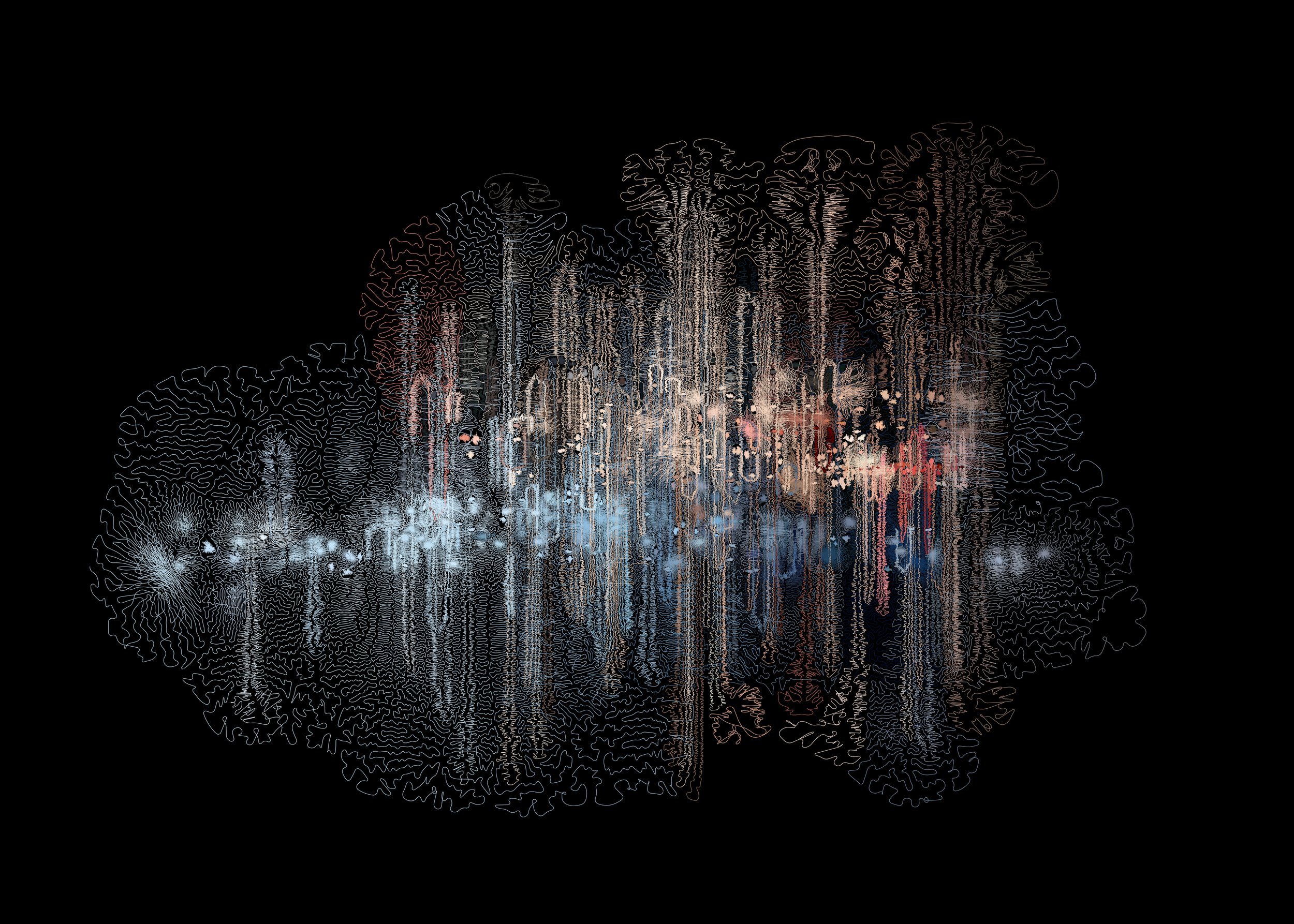



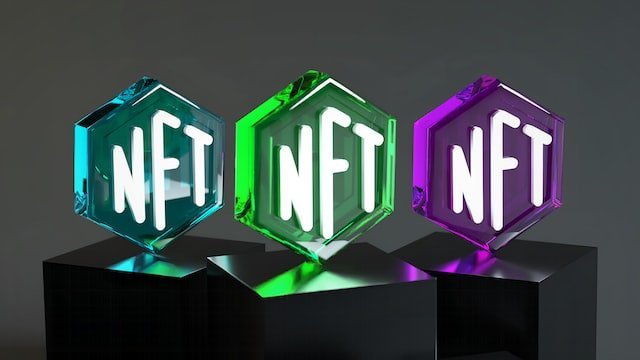

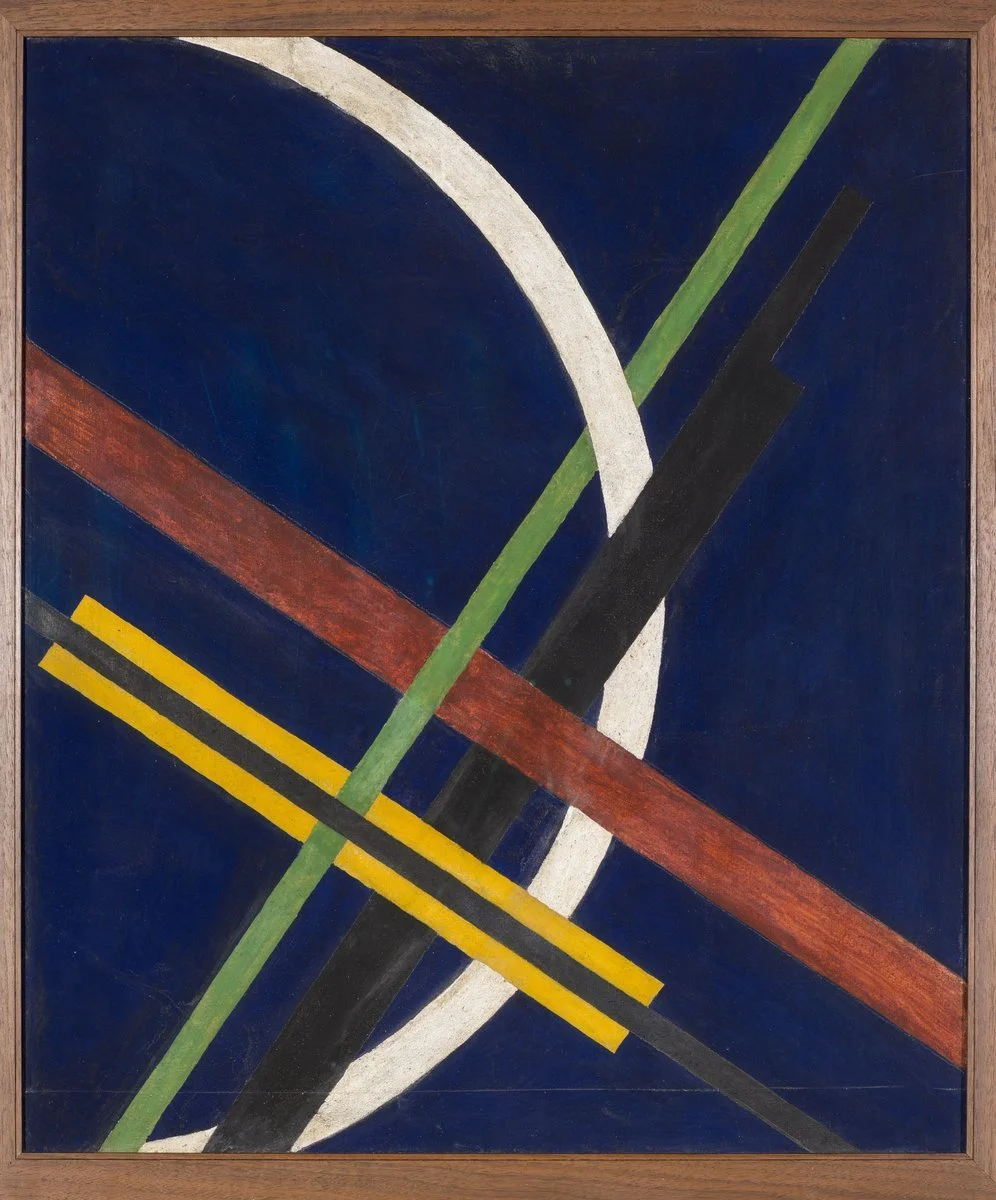
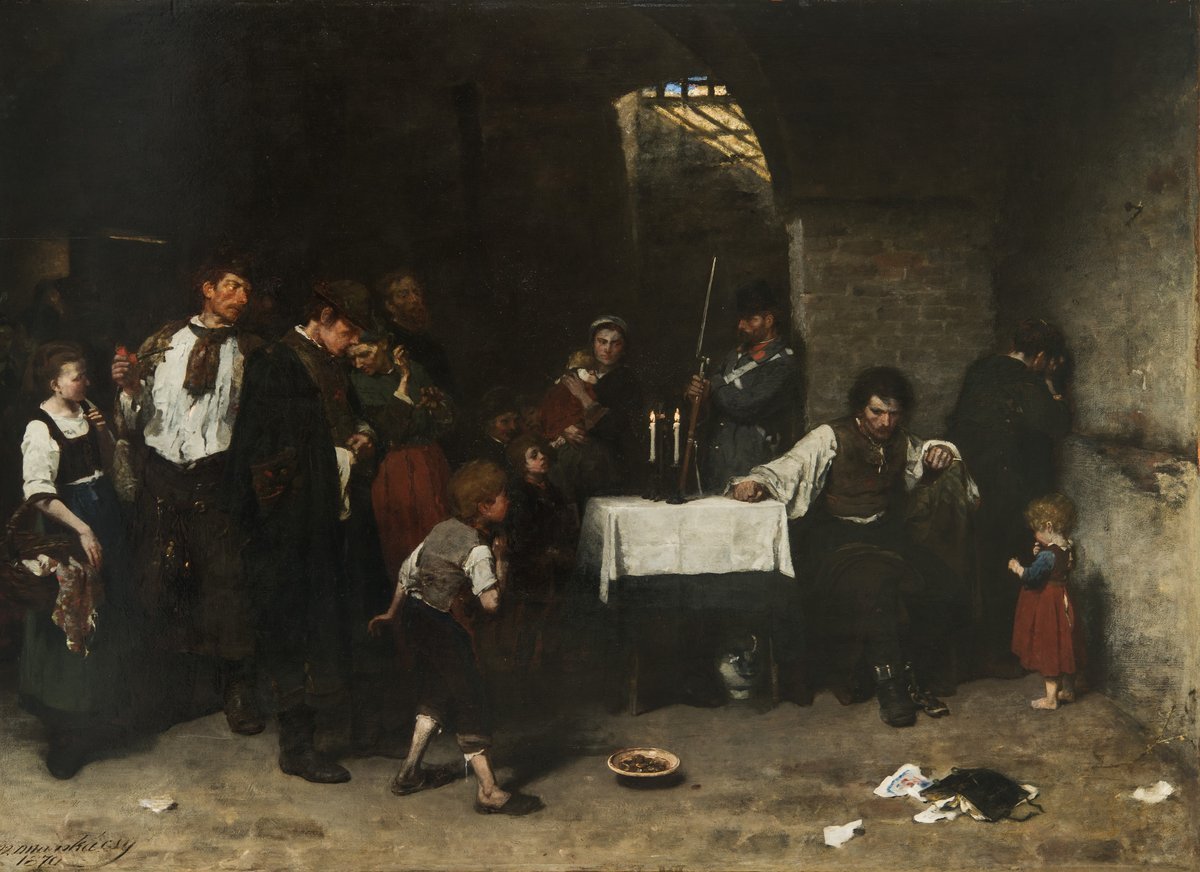

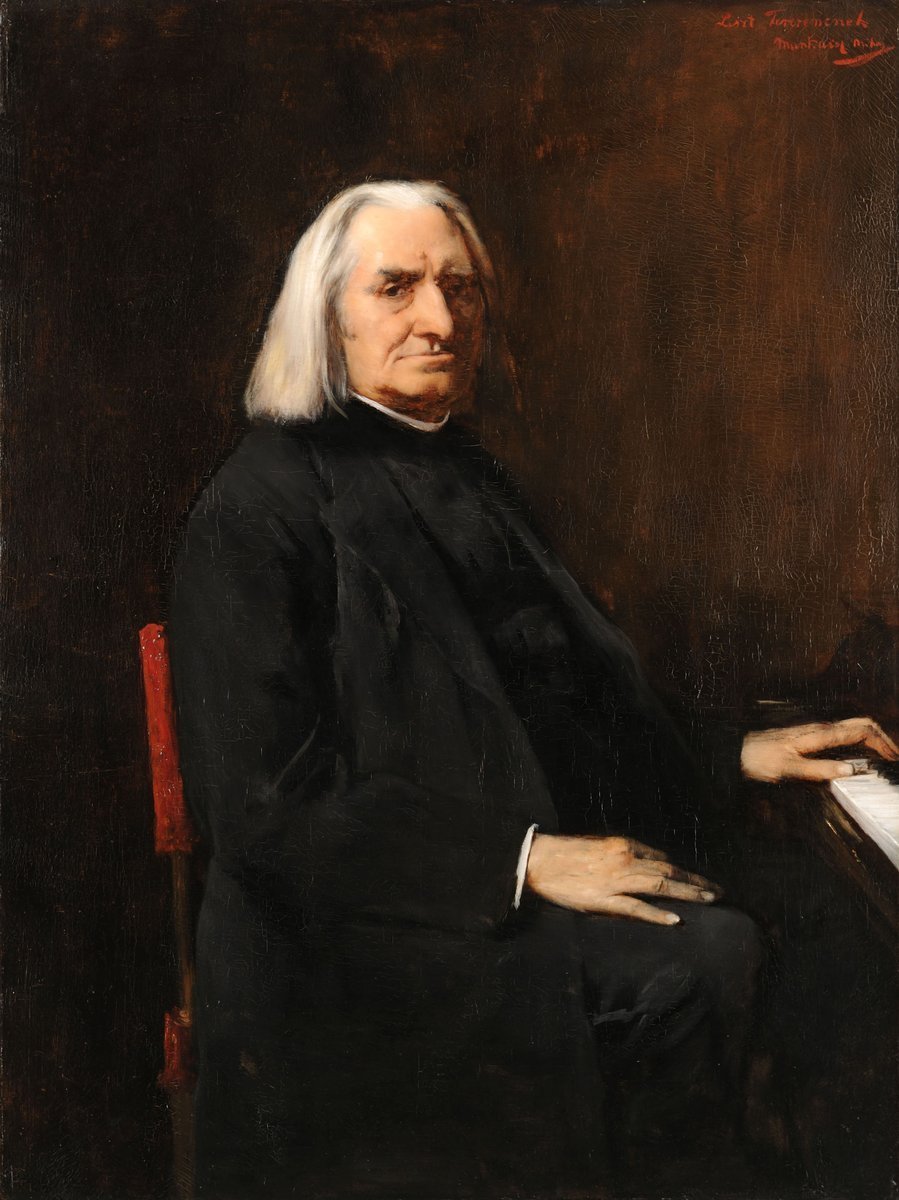

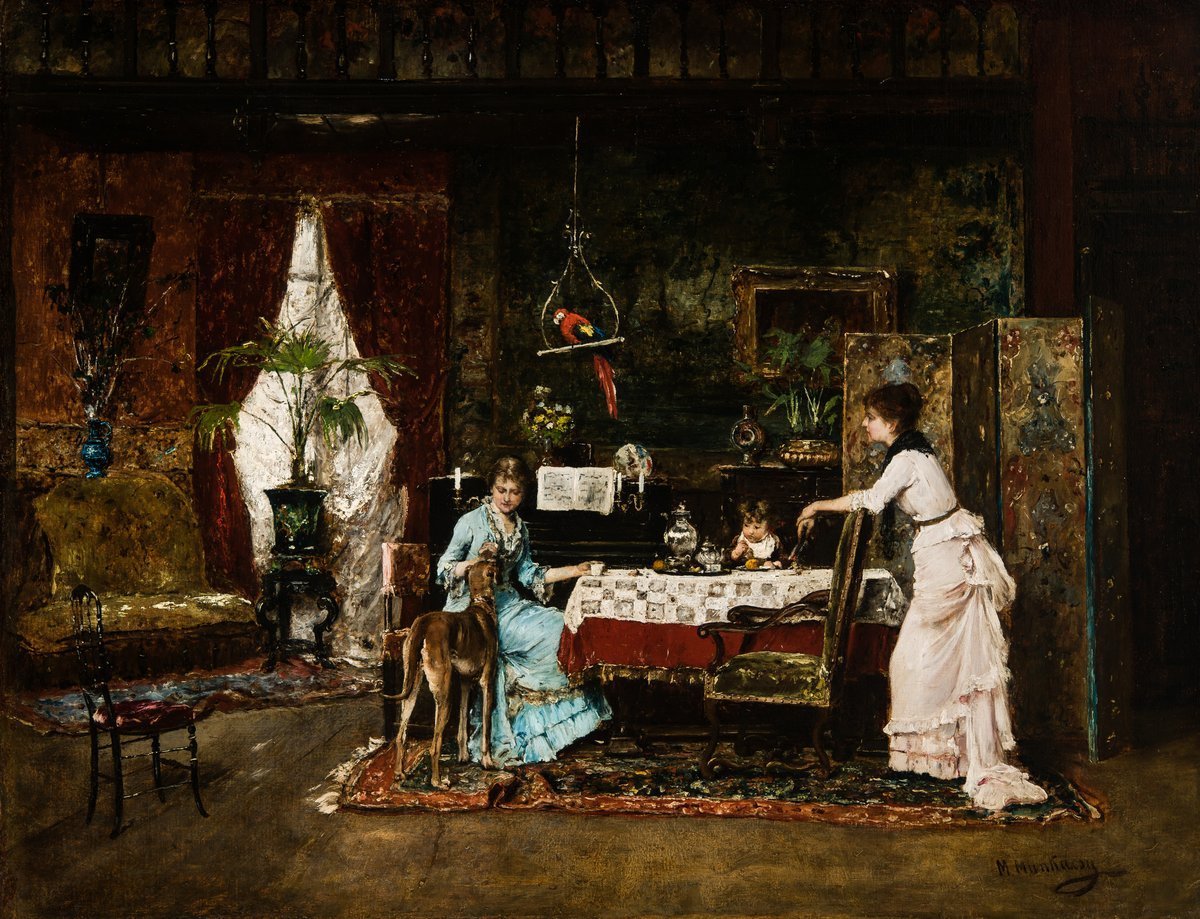
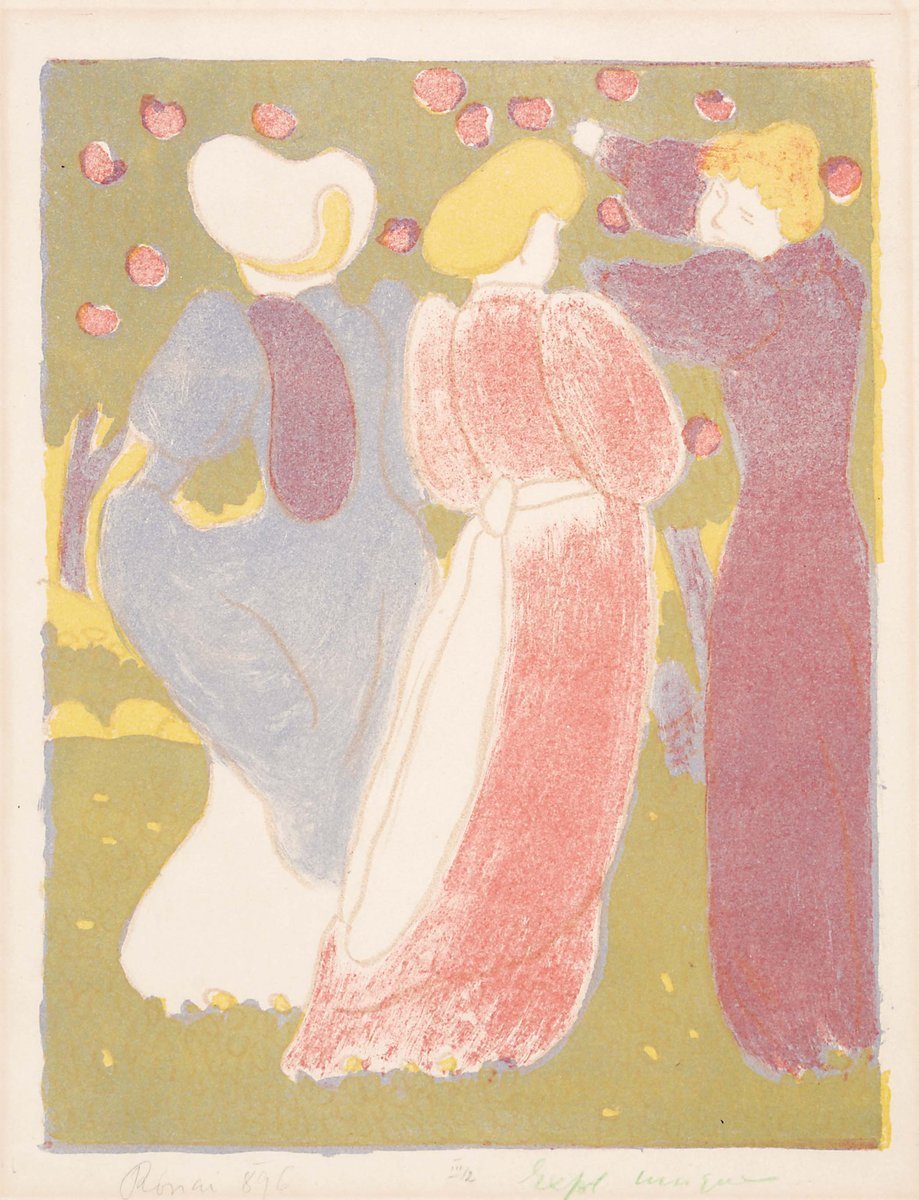








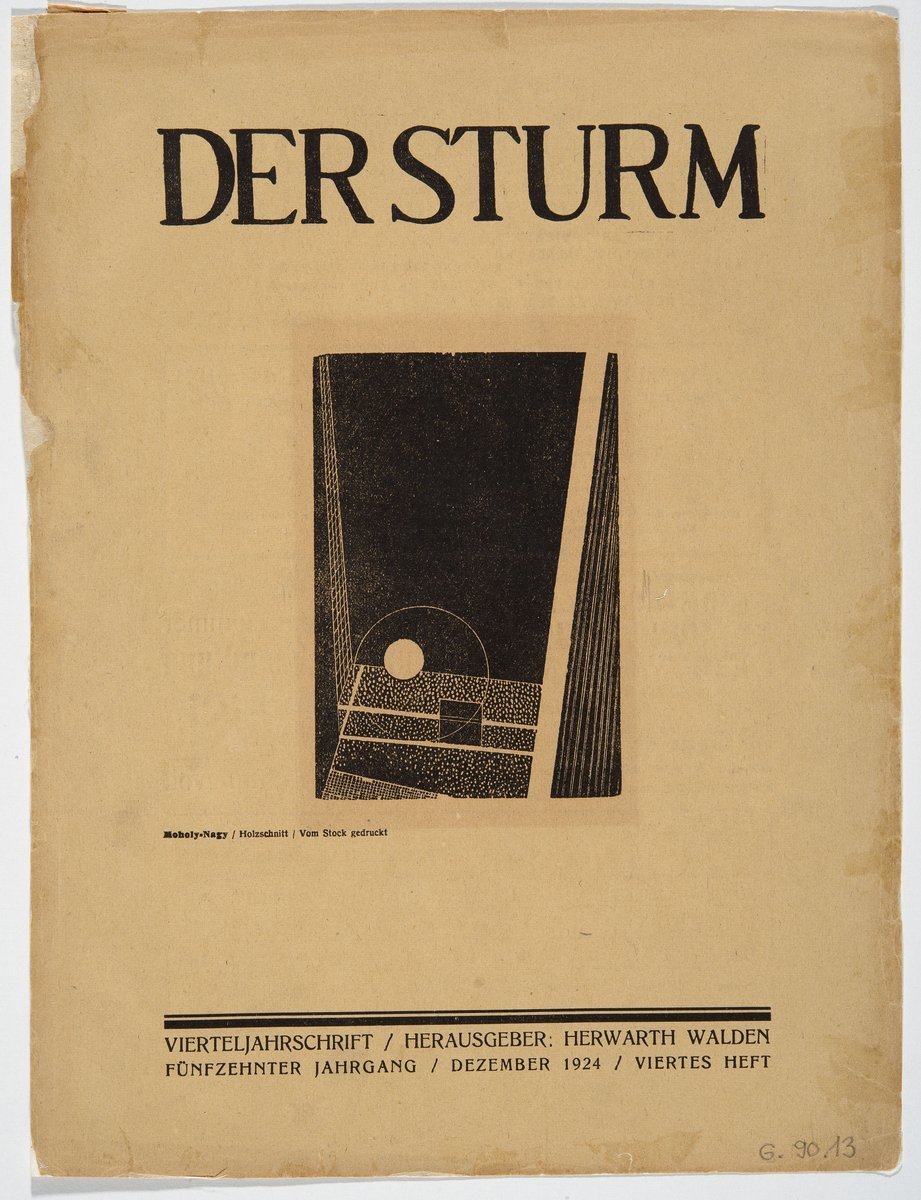


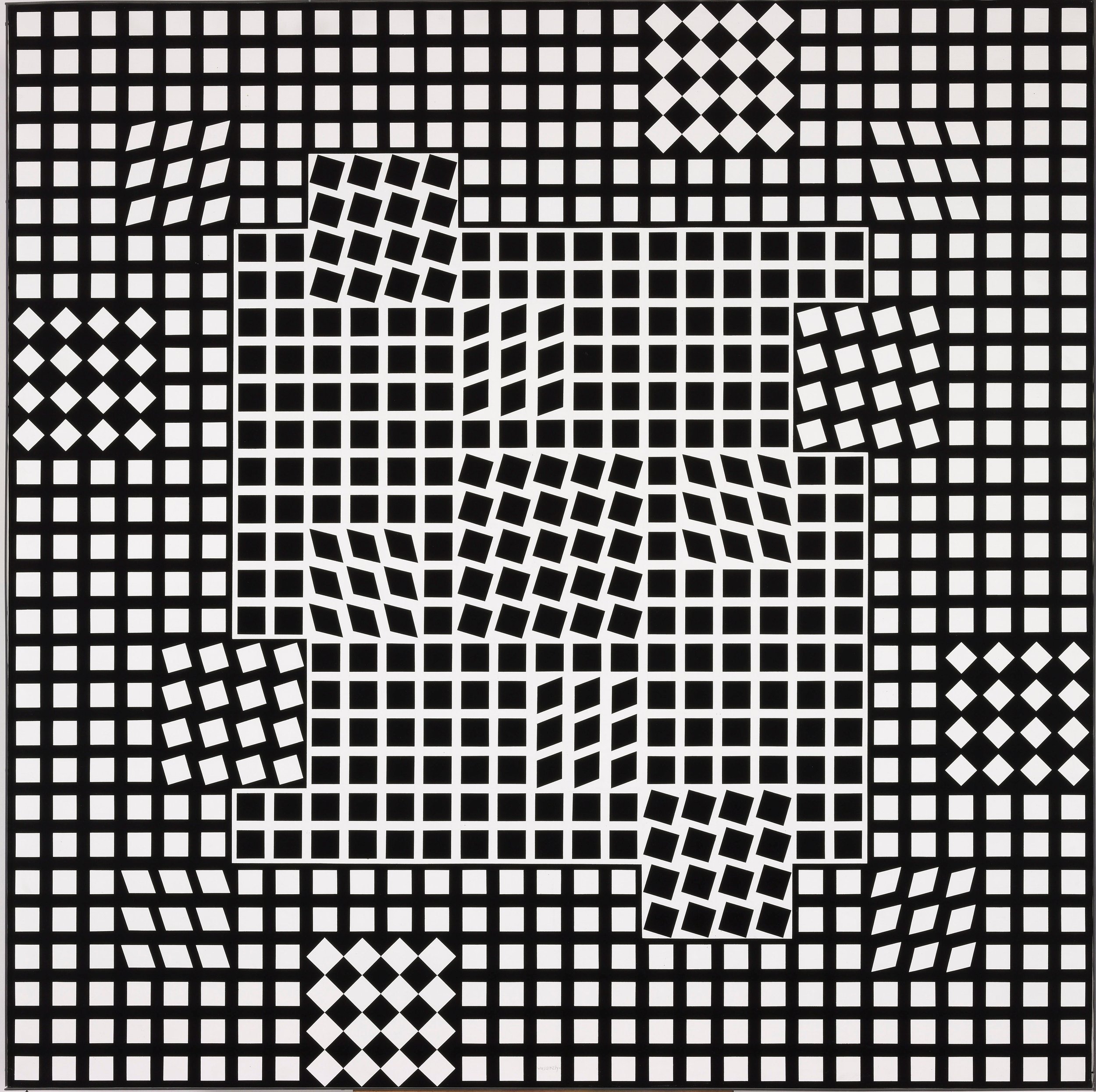


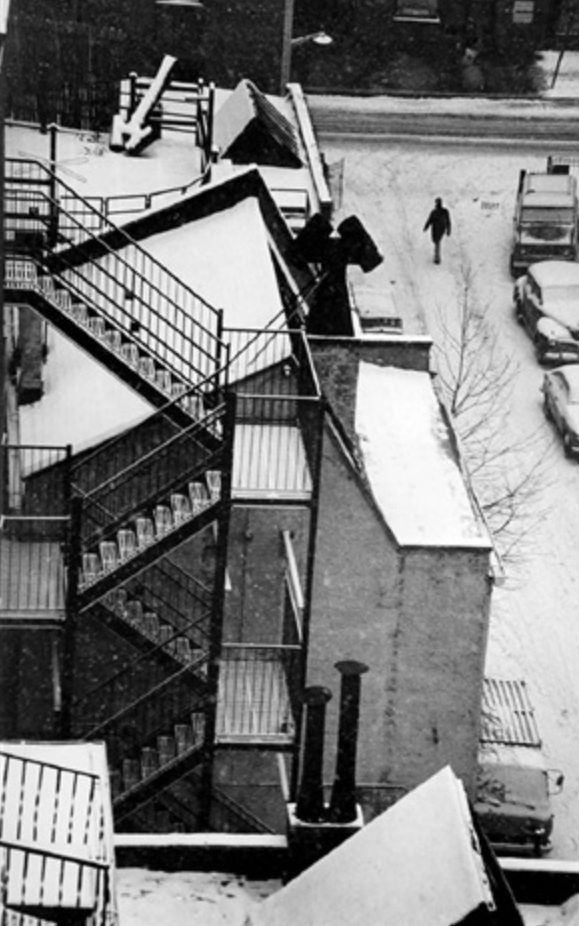

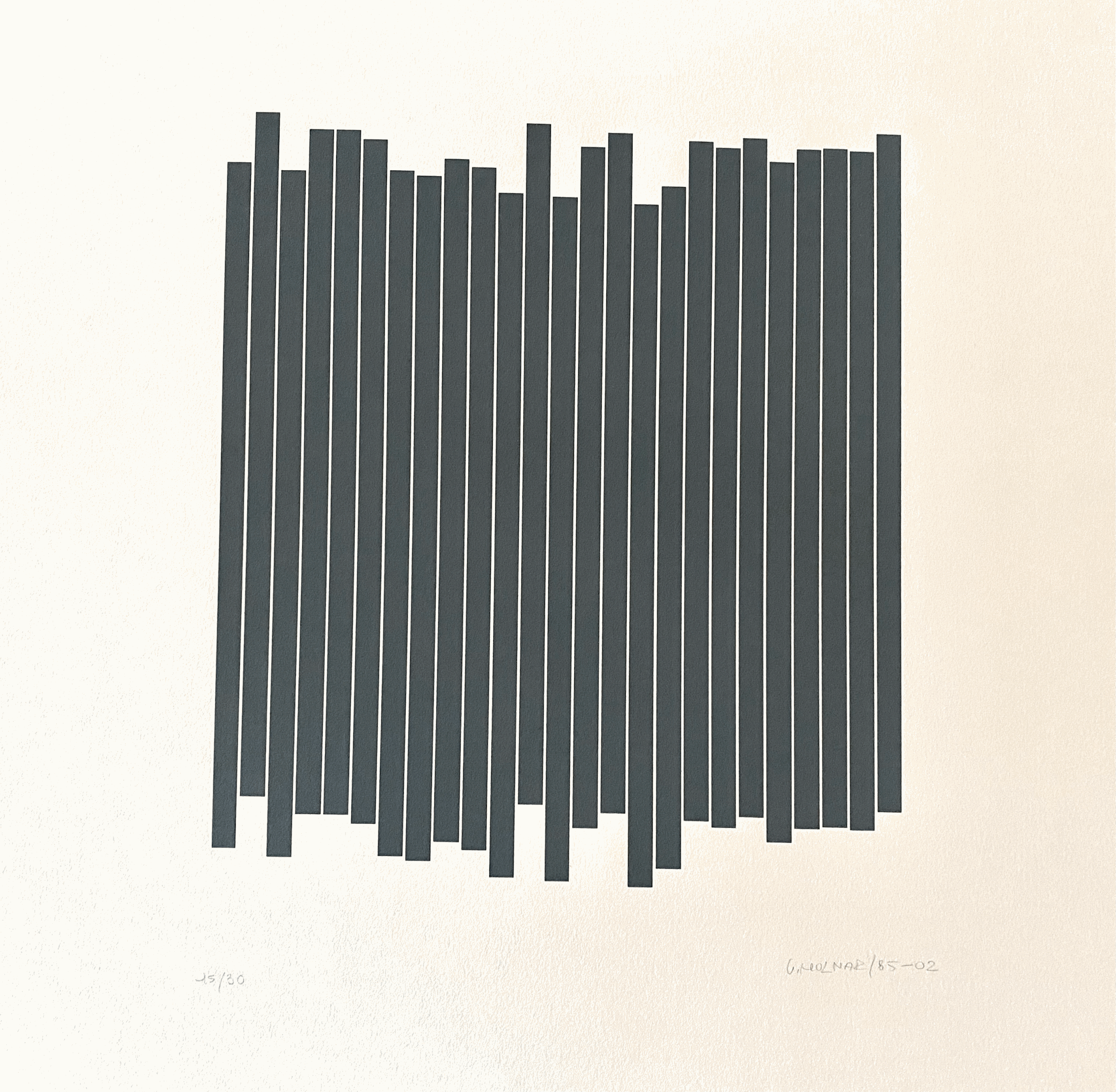
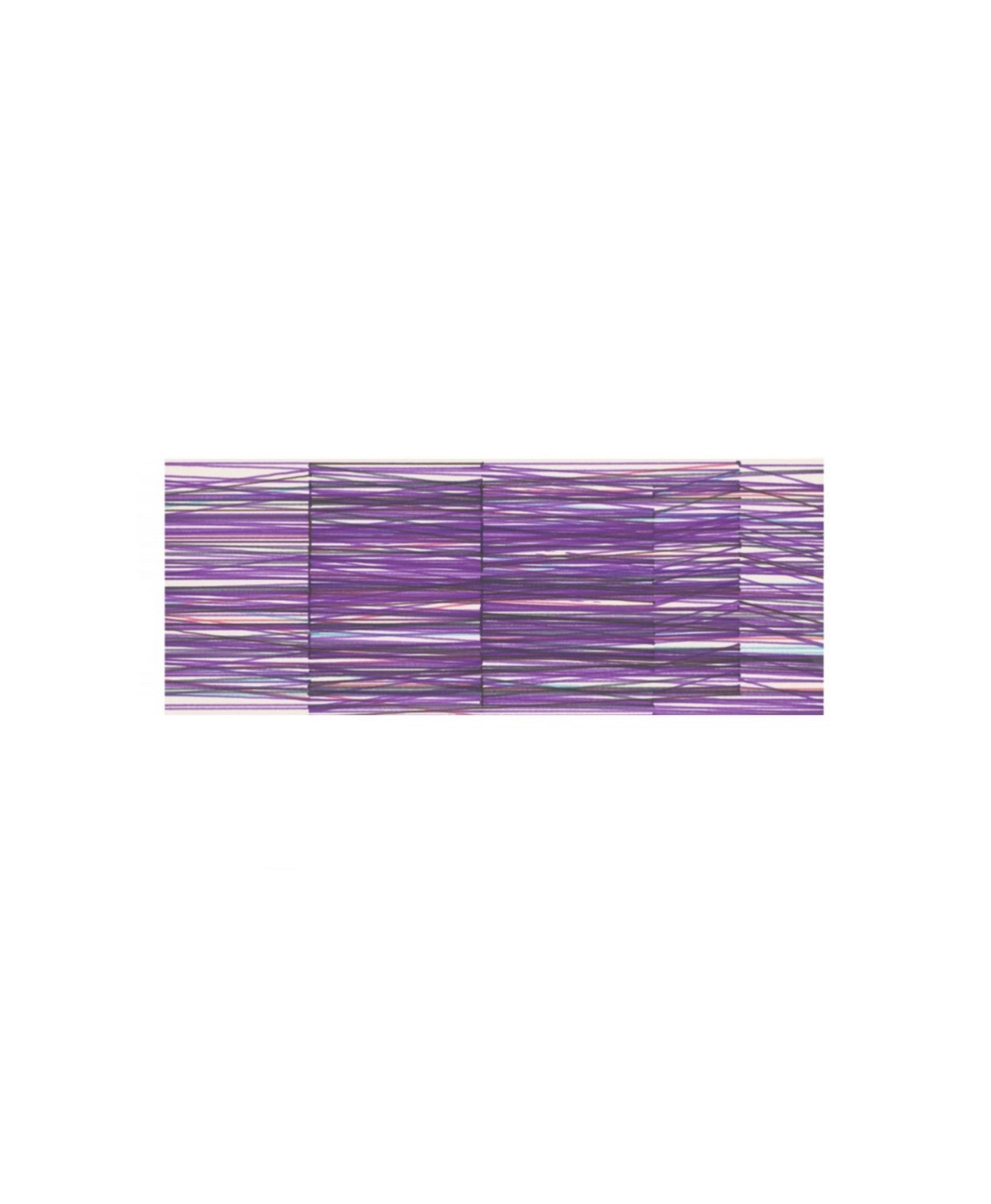

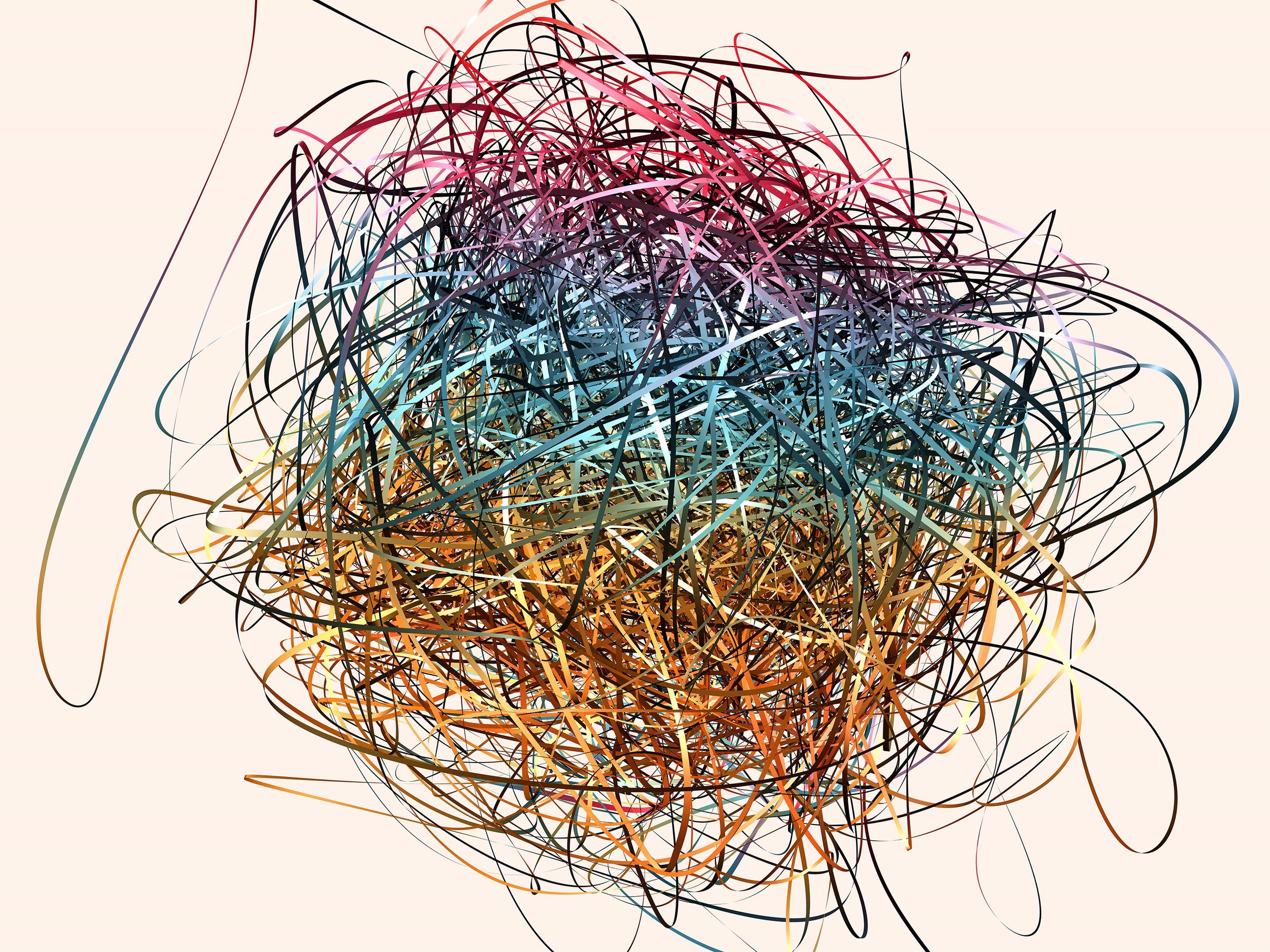
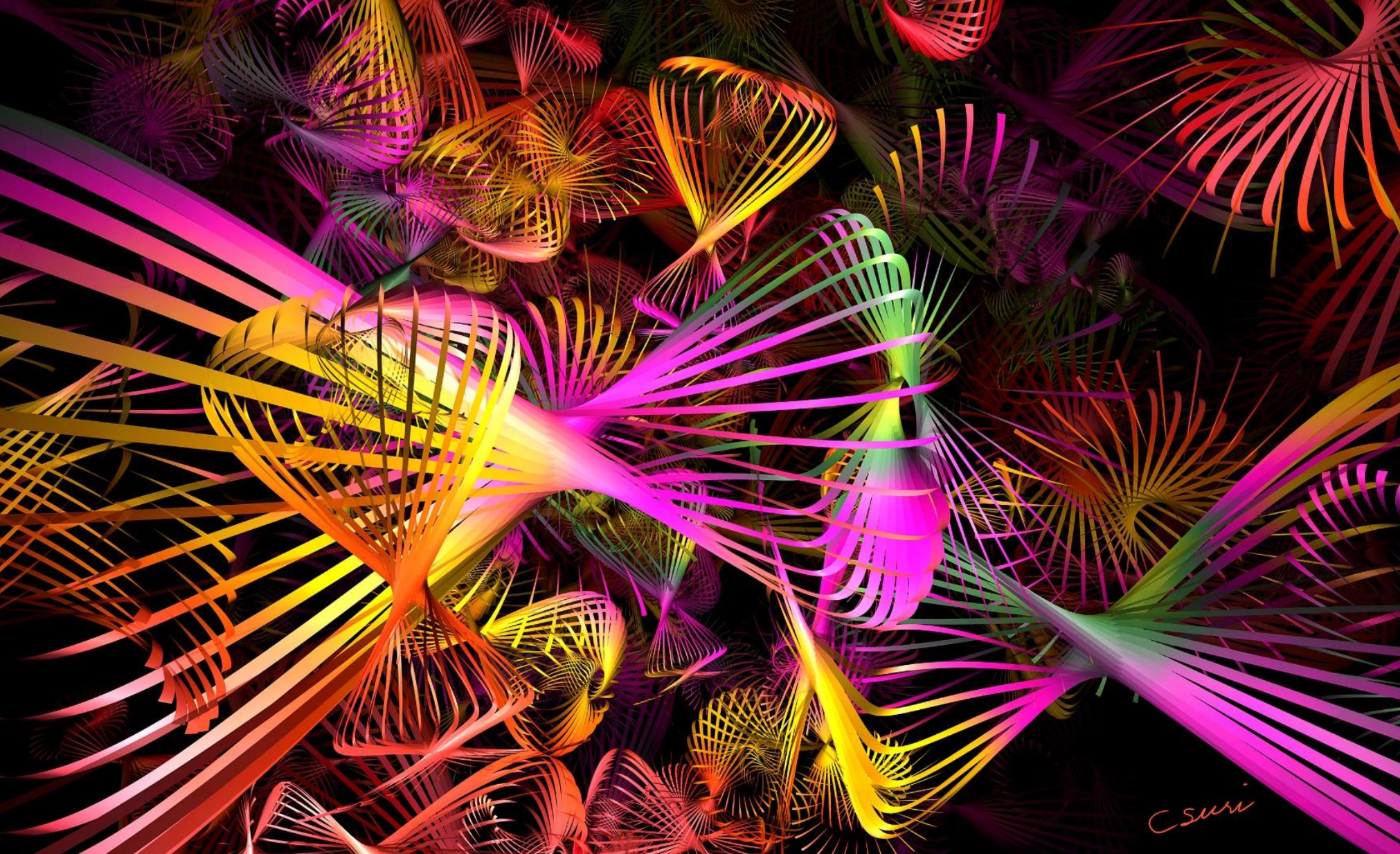
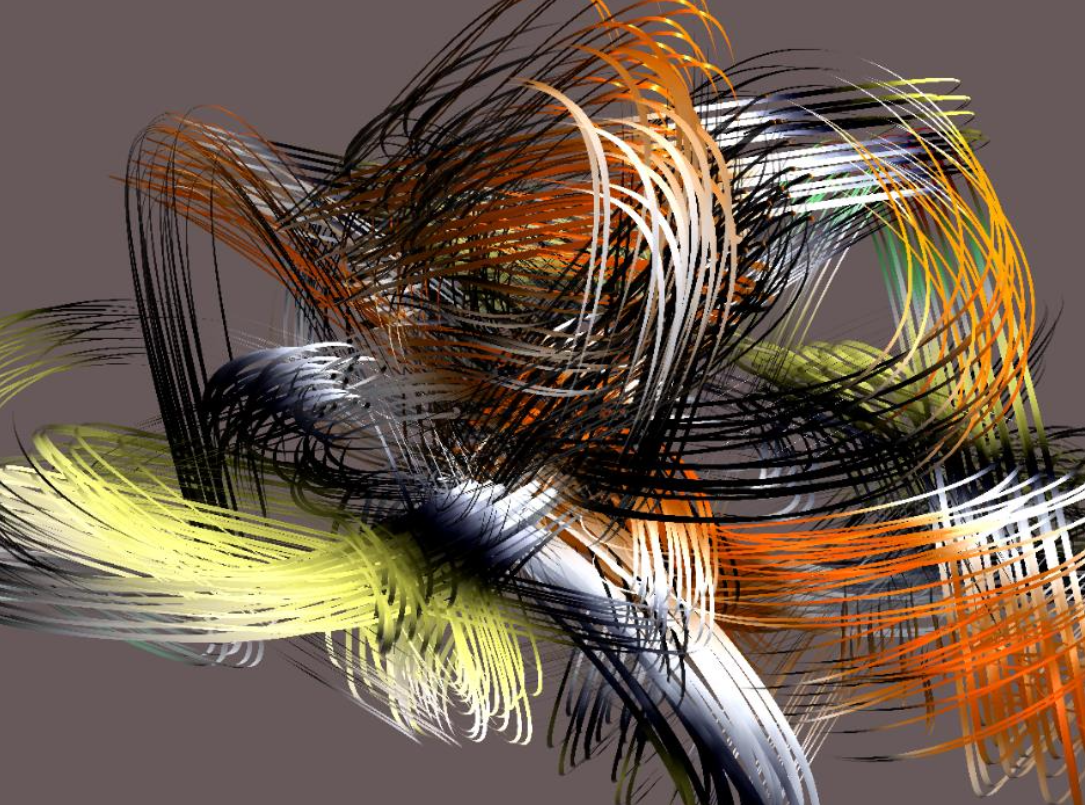
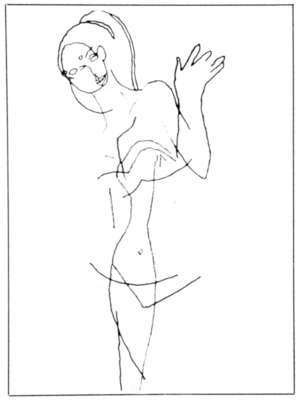
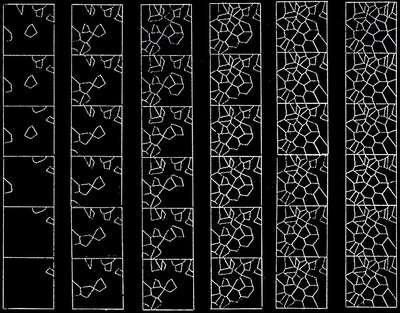
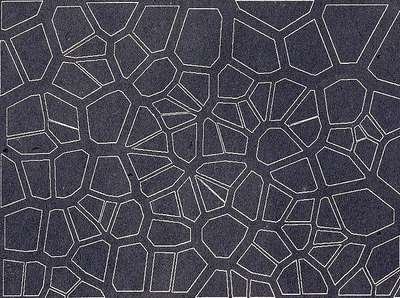
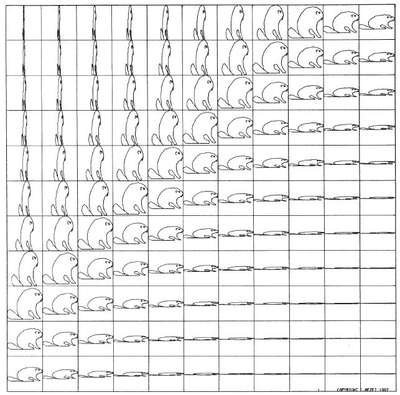


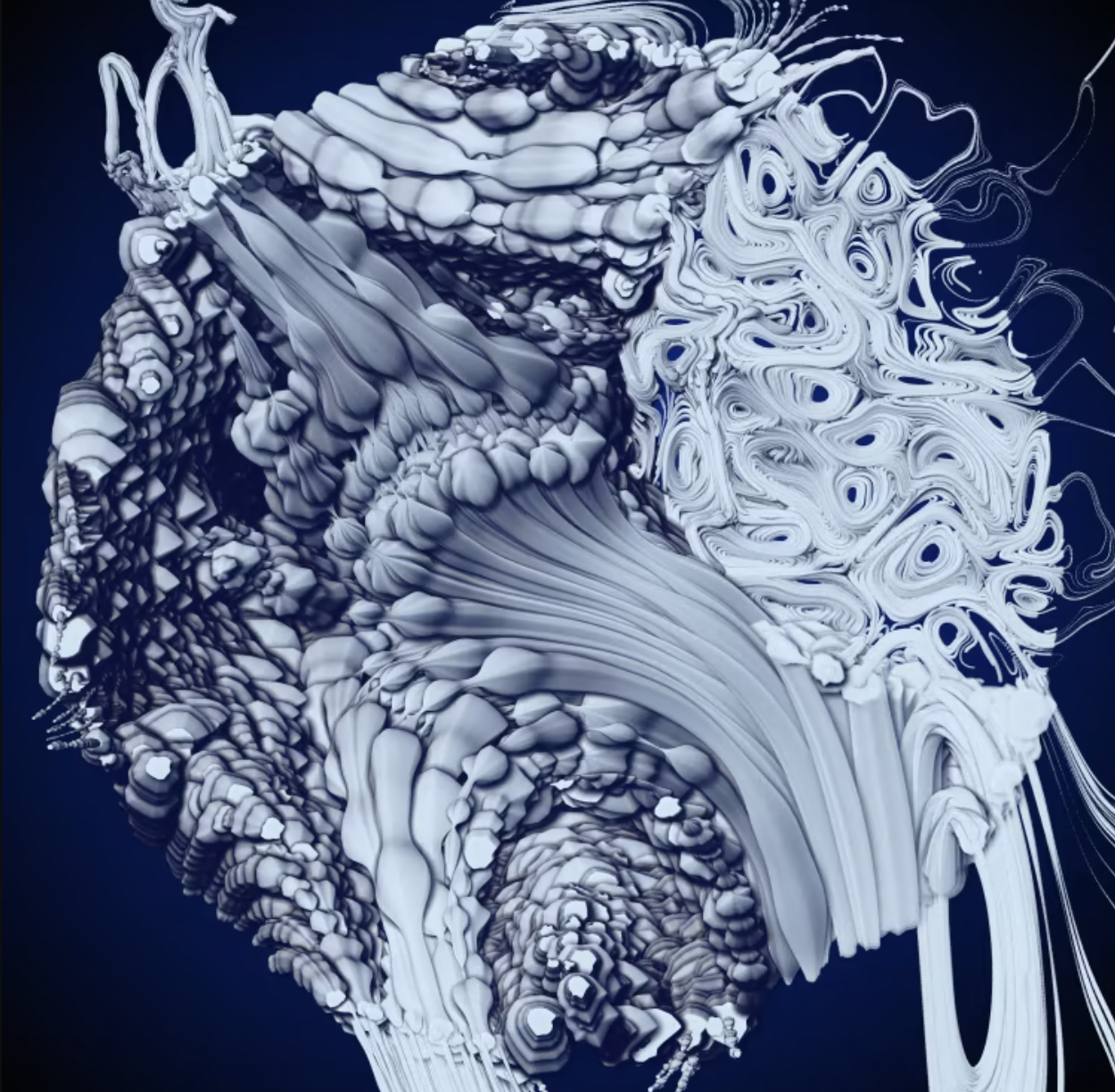
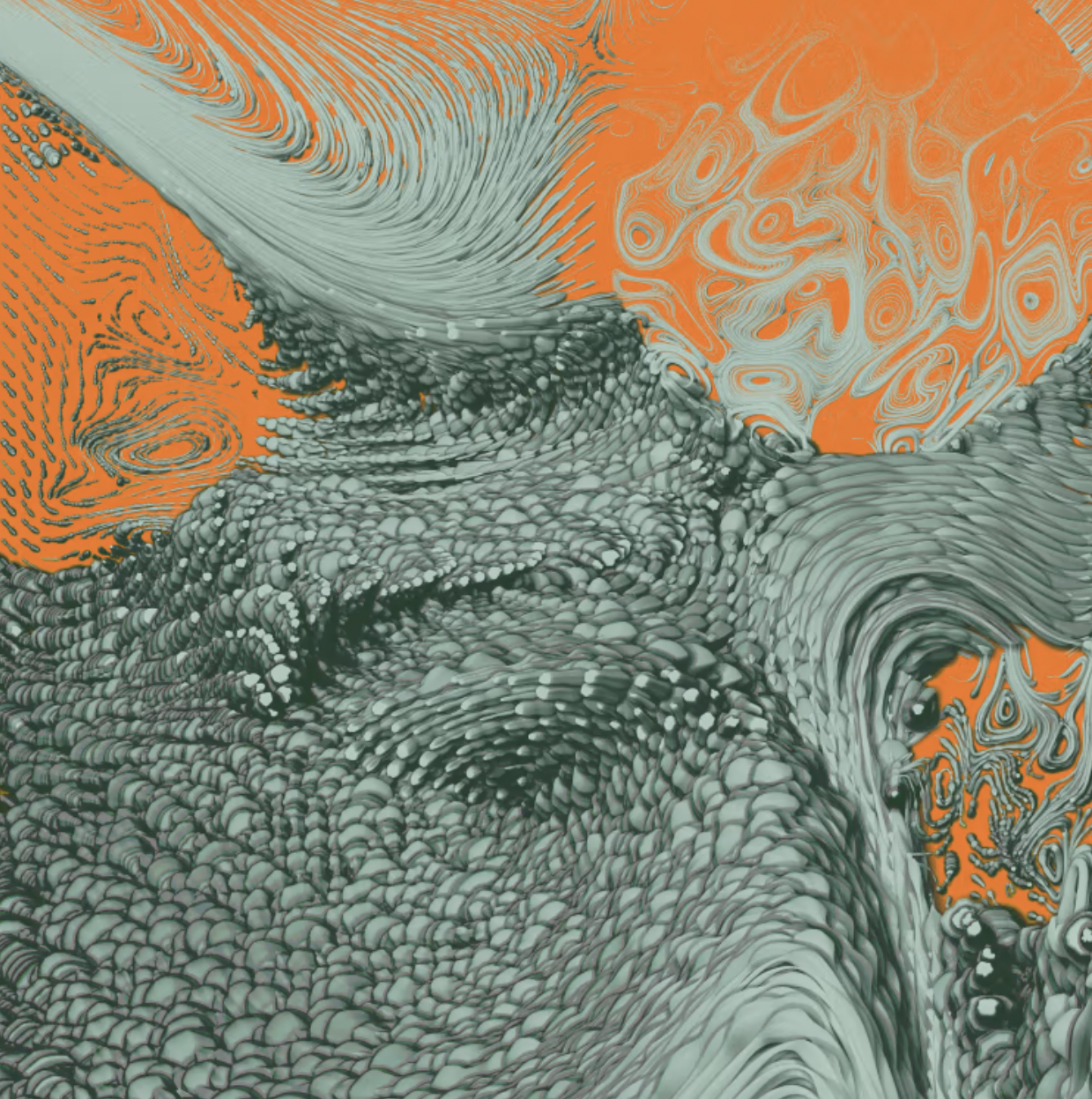
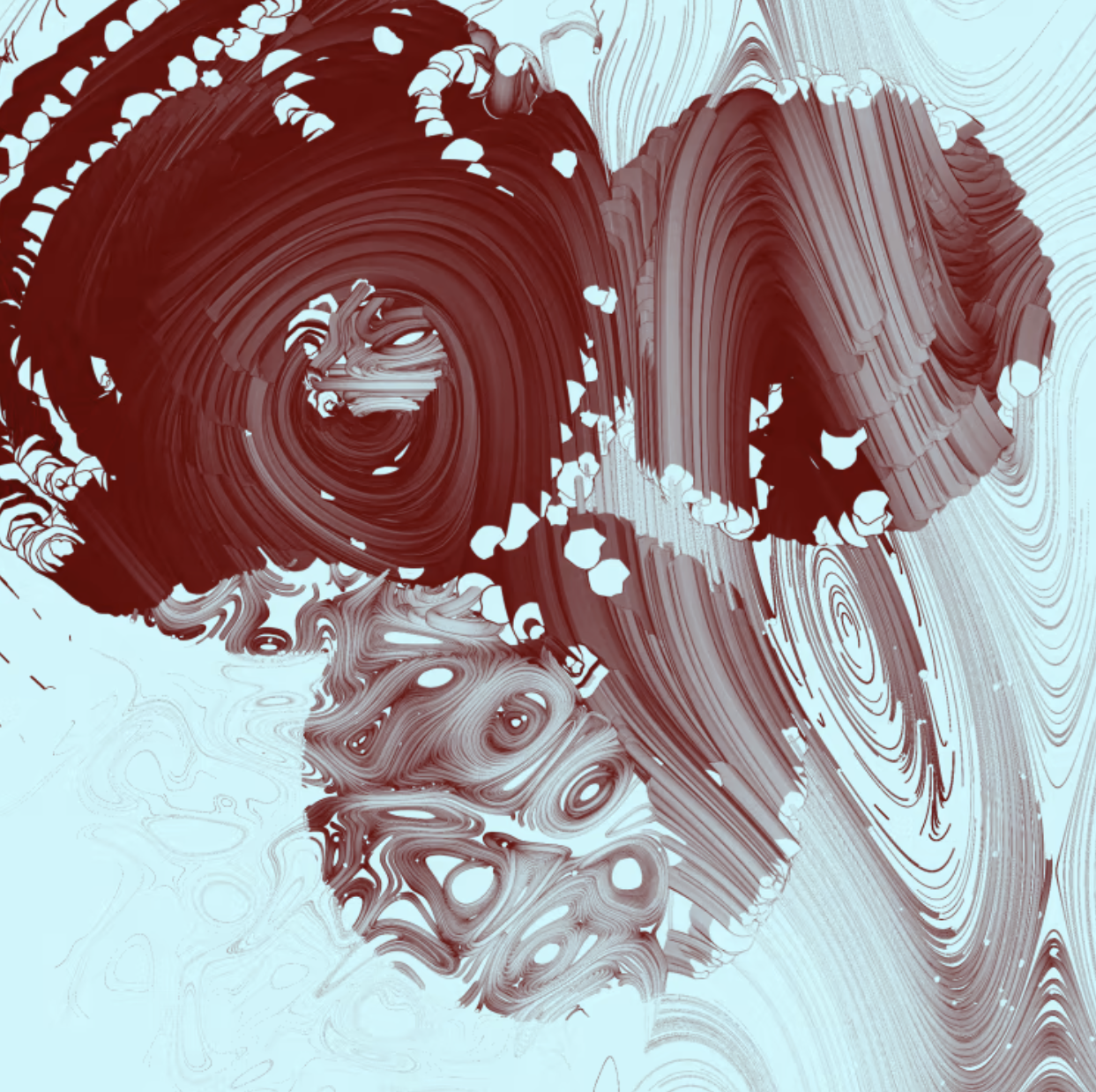

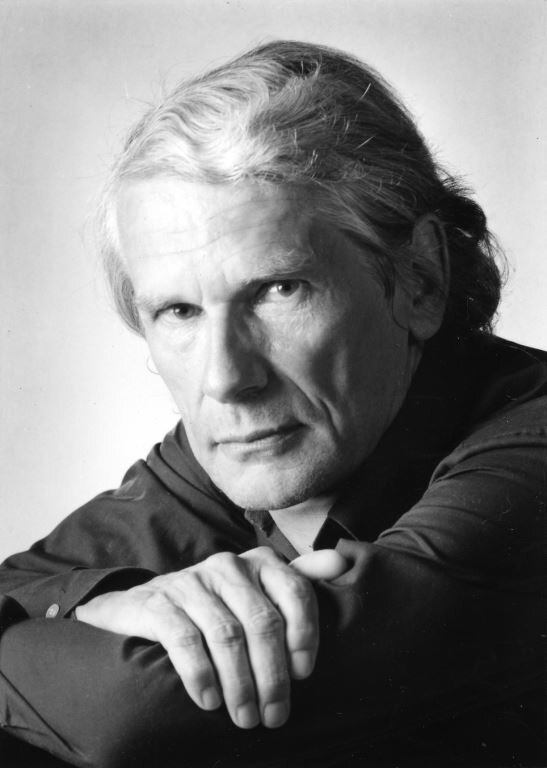


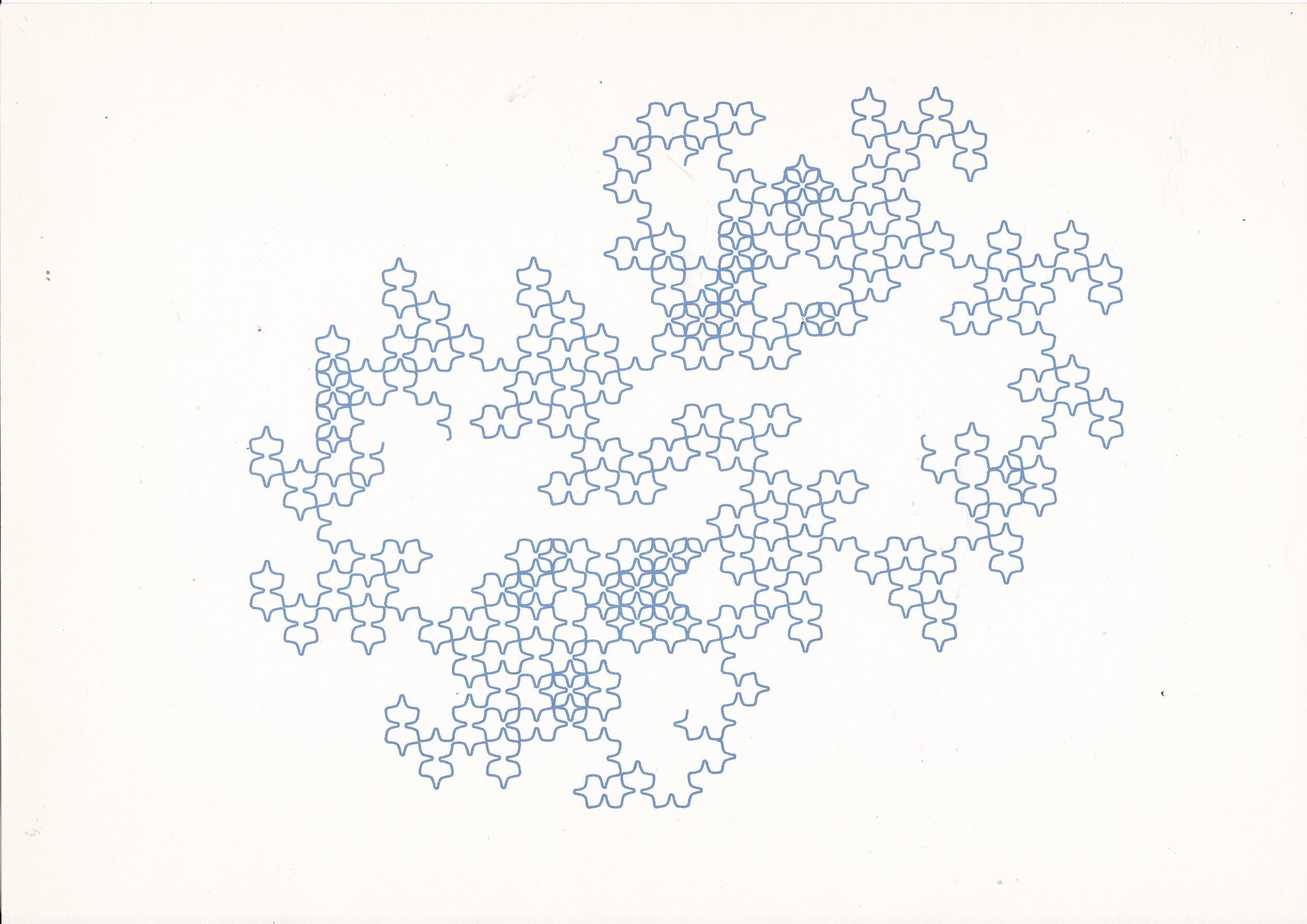
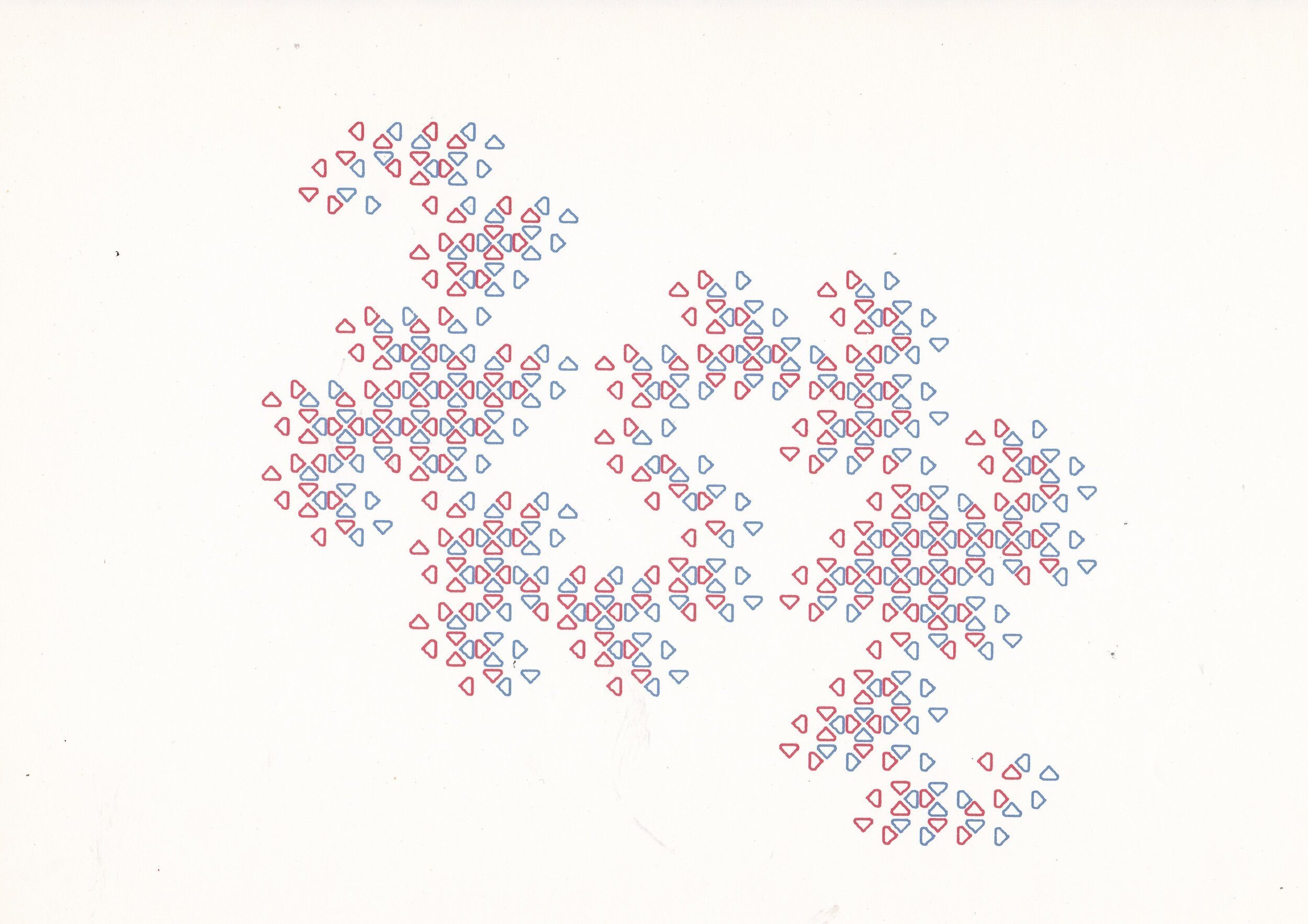
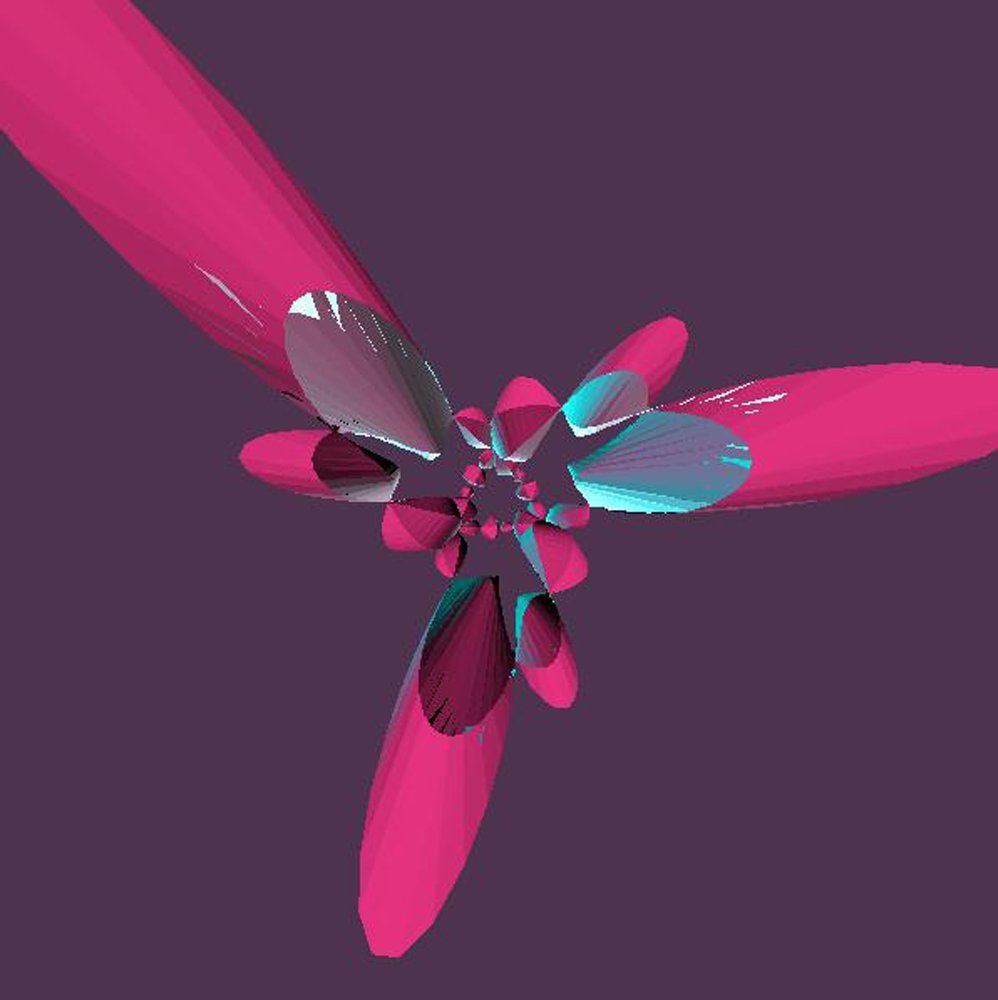

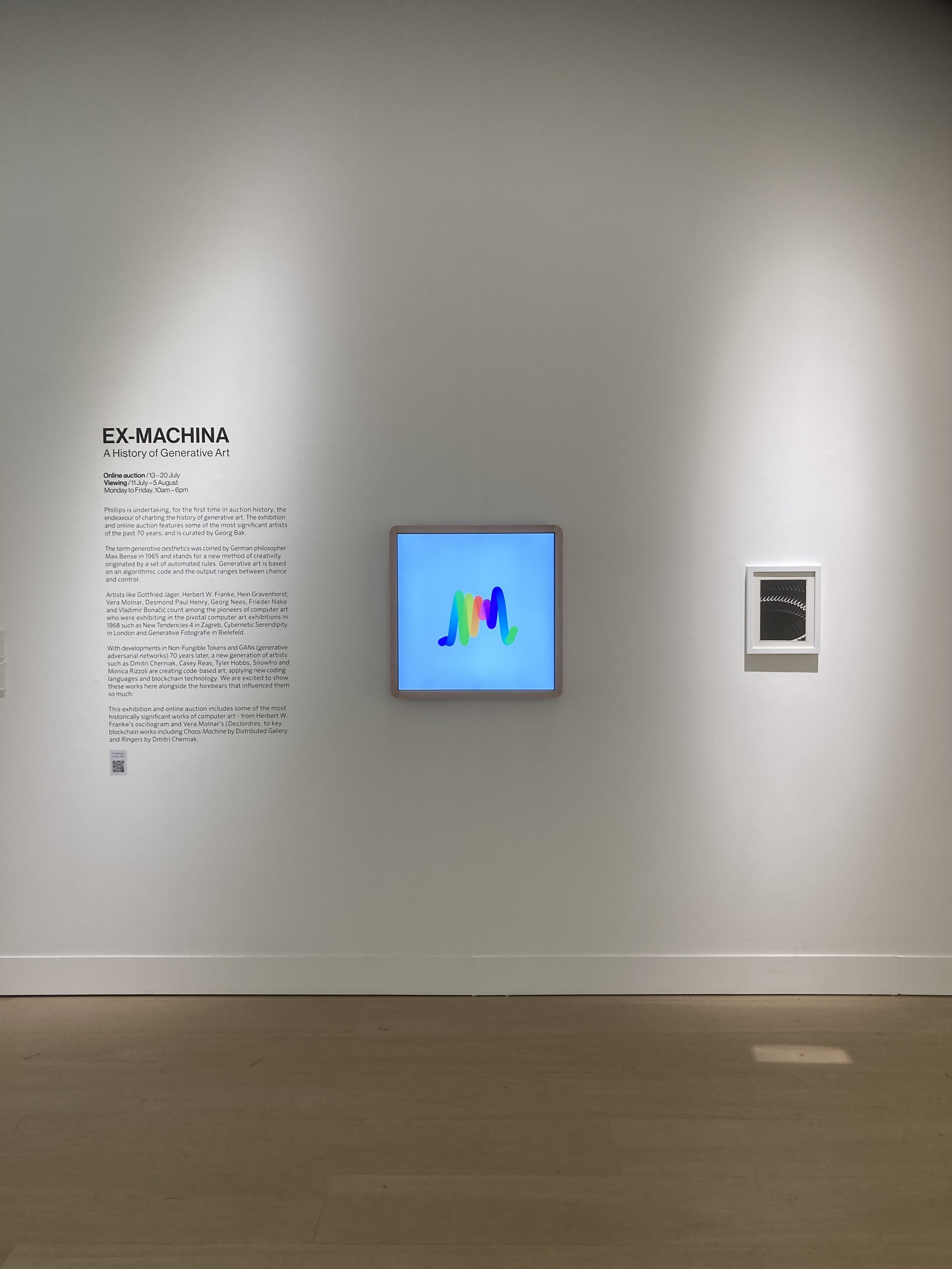







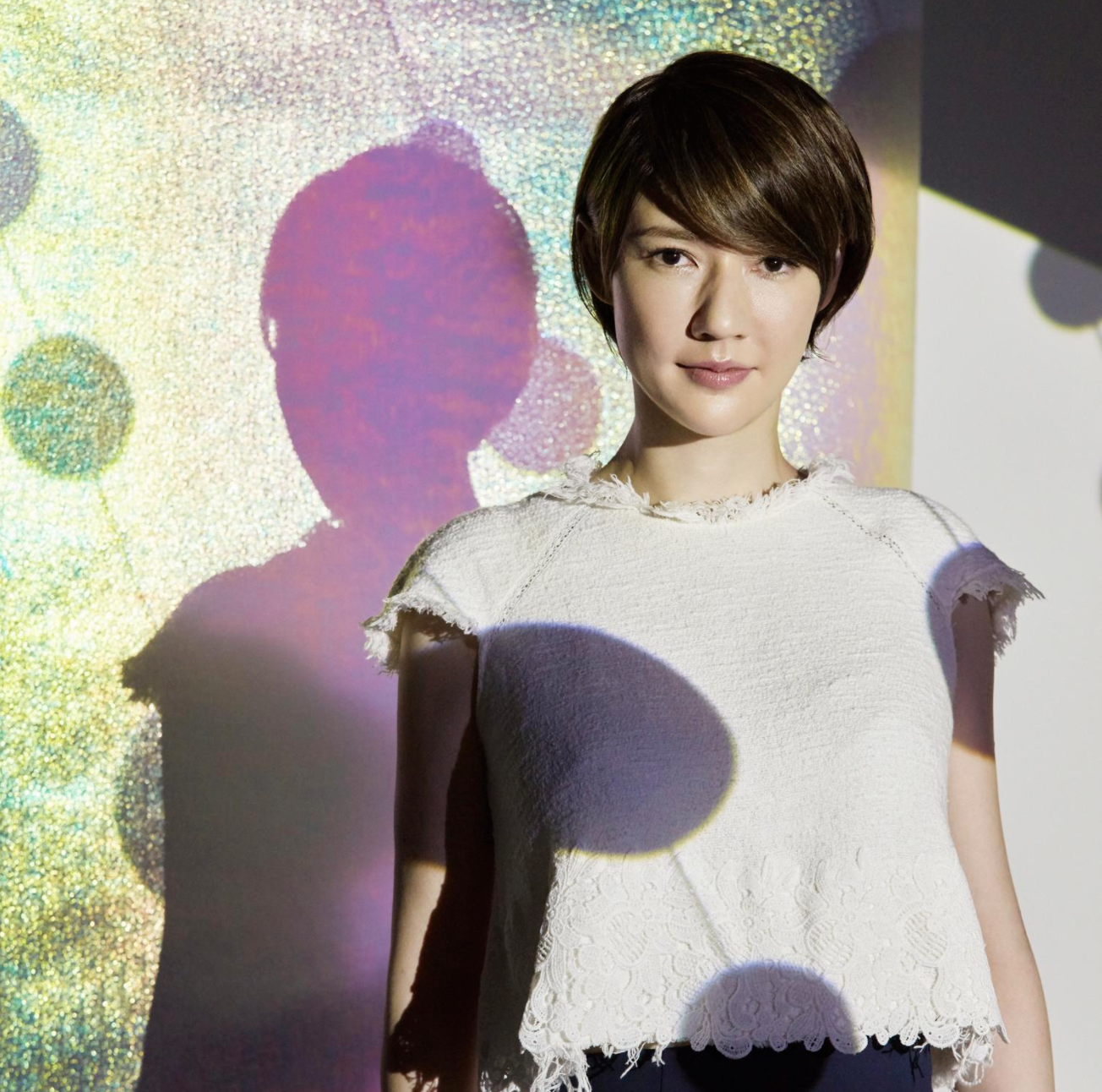


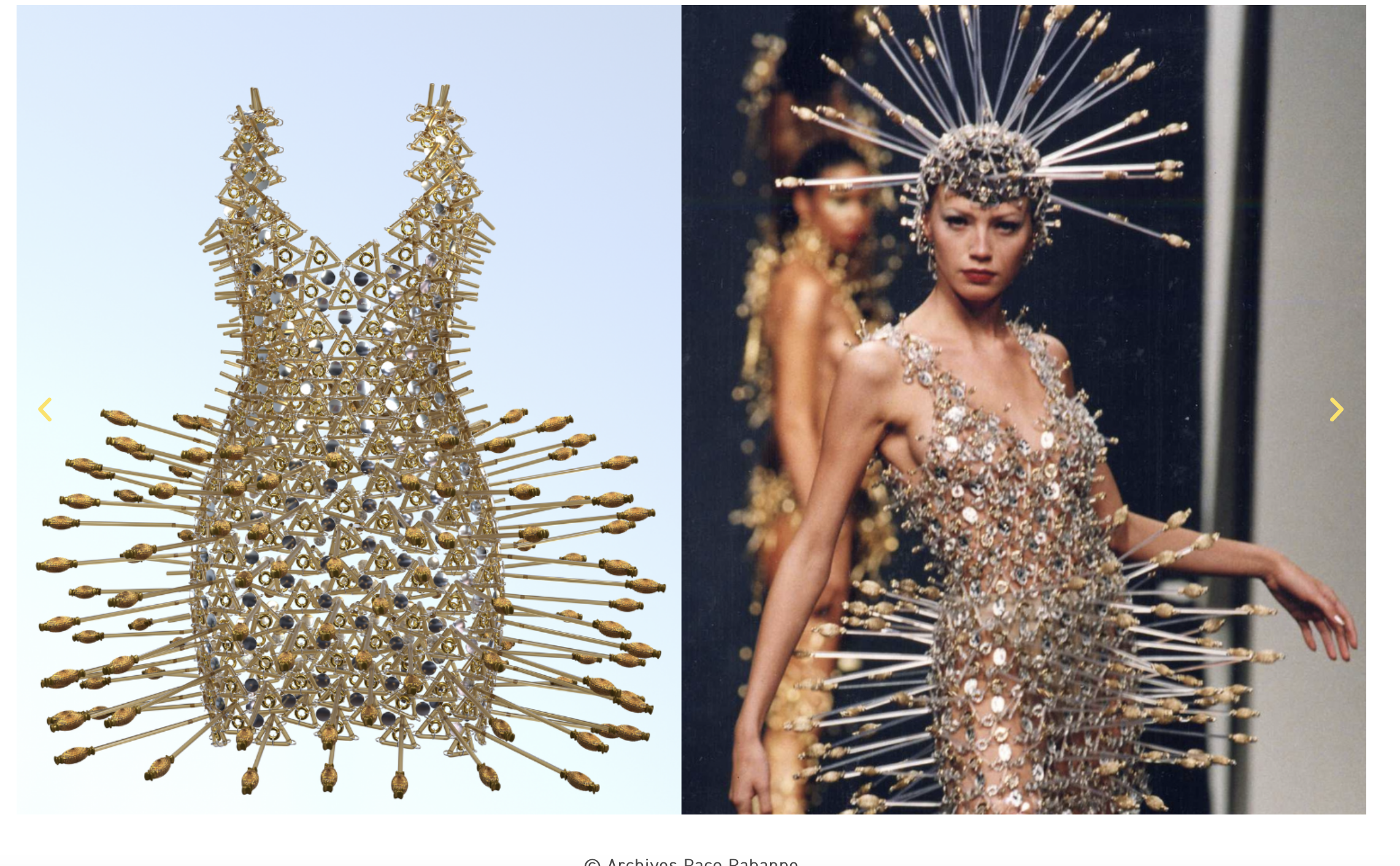













































![Lissajous_Series-pink-turquoise-13[1].jpg](https://images.squarespace-cdn.com/content/v1/63a2ce0664014f2264b055d4/1671627717462-UH2LFLLEVKLYC8KE13PU/Lissajous_Series-pink-turquoise-13%5B1%5D.jpg)

![Lissajous_Series-pink-turquoise-13[1].jpg](https://images.squarespace-cdn.com/content/v1/63a2ce0664014f2264b055d4/1671627721465-PZT0WI6X60YTVEIFKKC5/Lissajous_Series-pink-turquoise-13%5B1%5D.jpg)
Personal Effects (2018) canvas sac, artist's blood,ink
PRICE UPON REQUEST
Please email us at: info@katevassgalerie.com